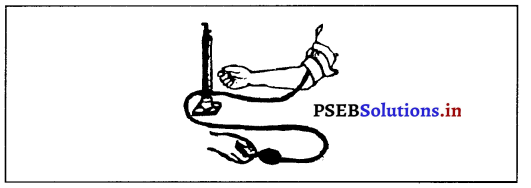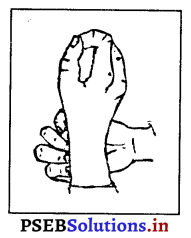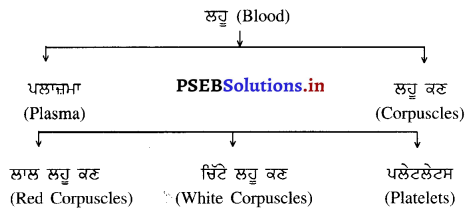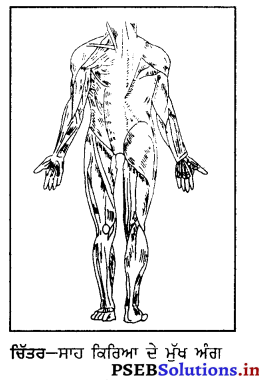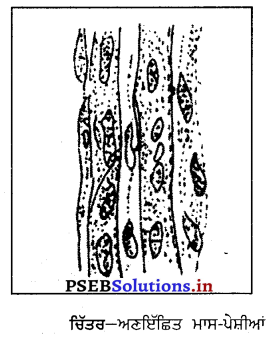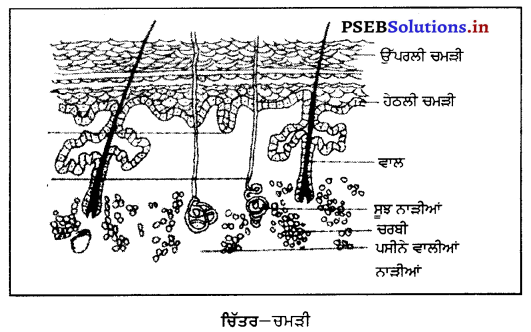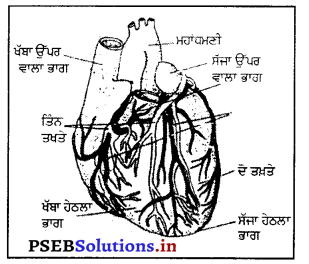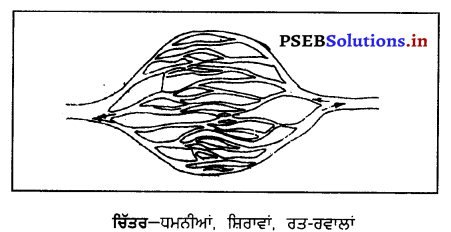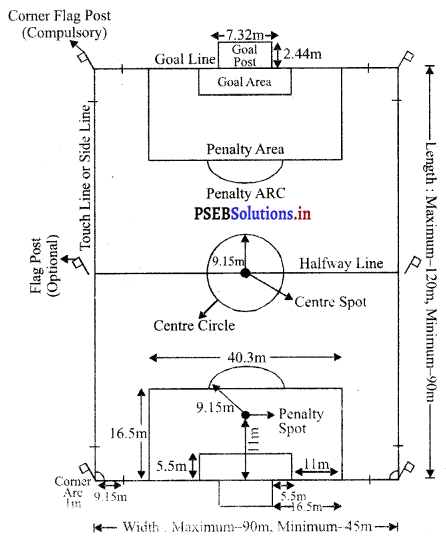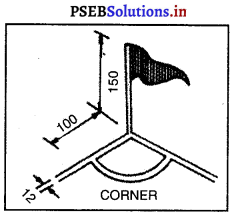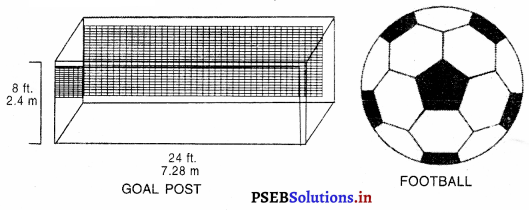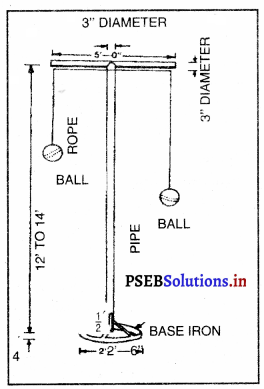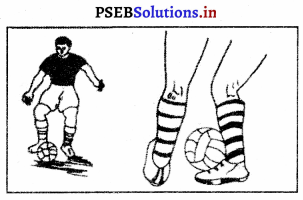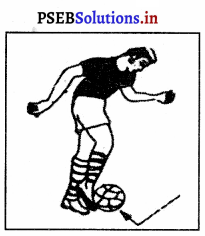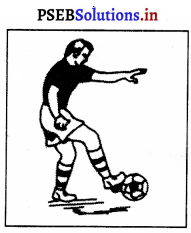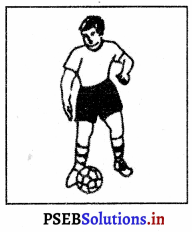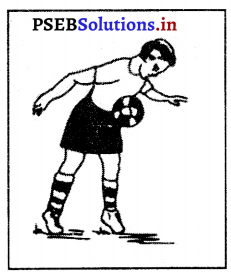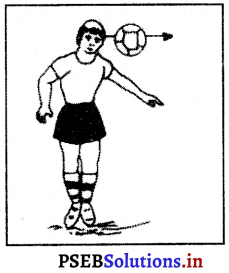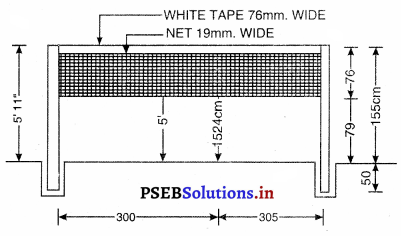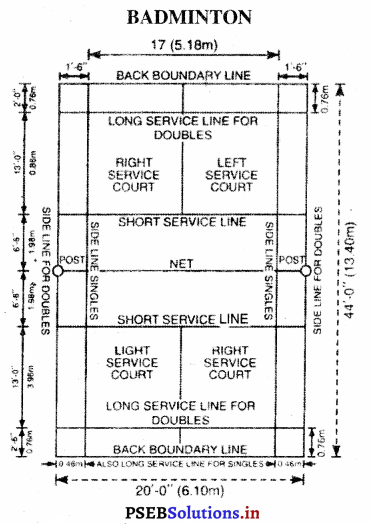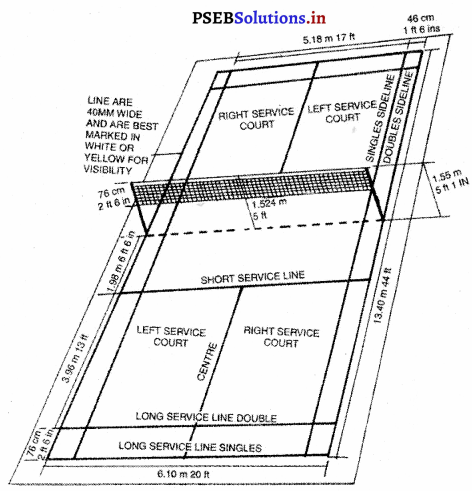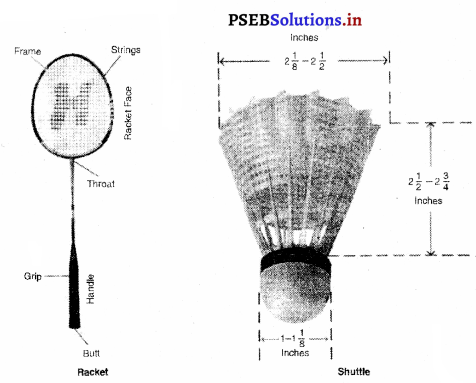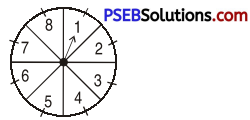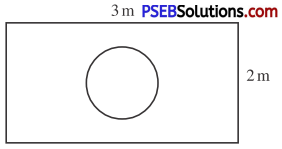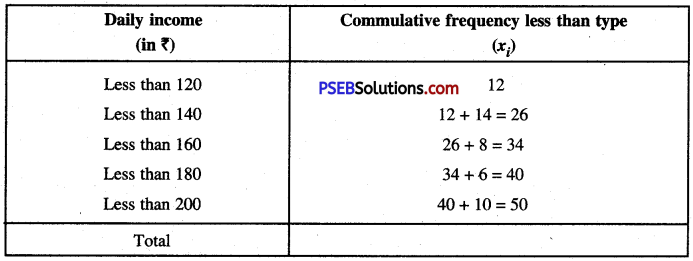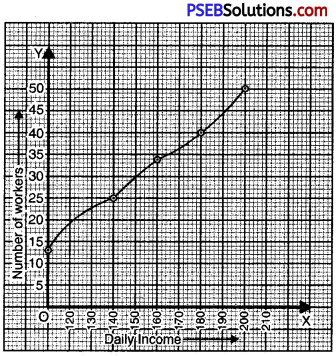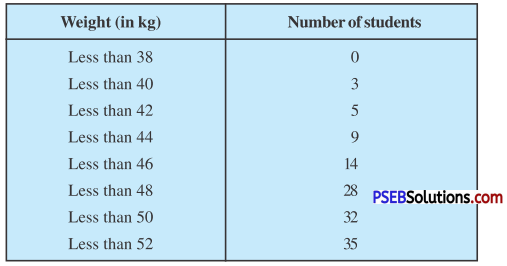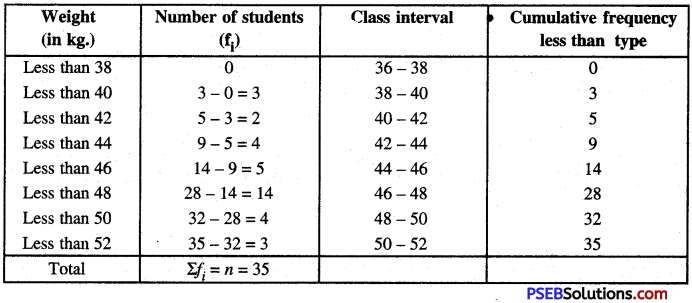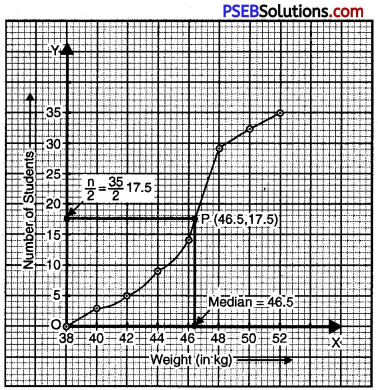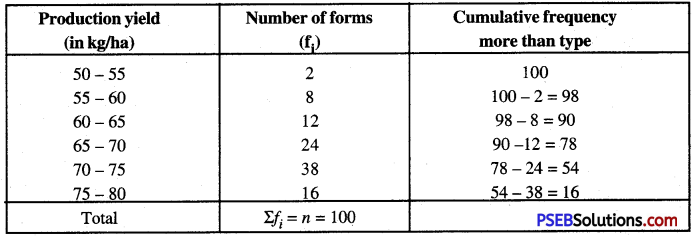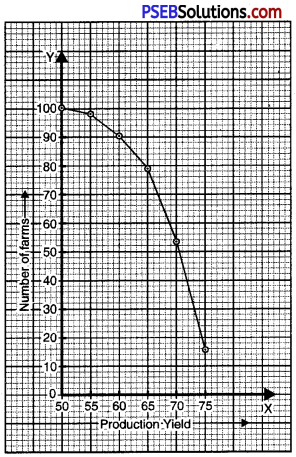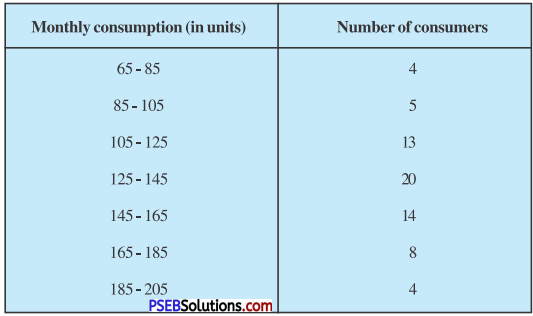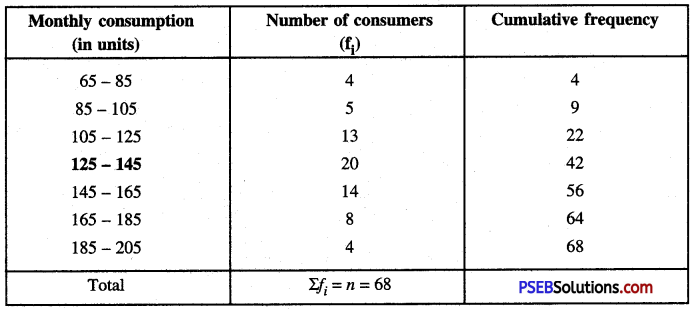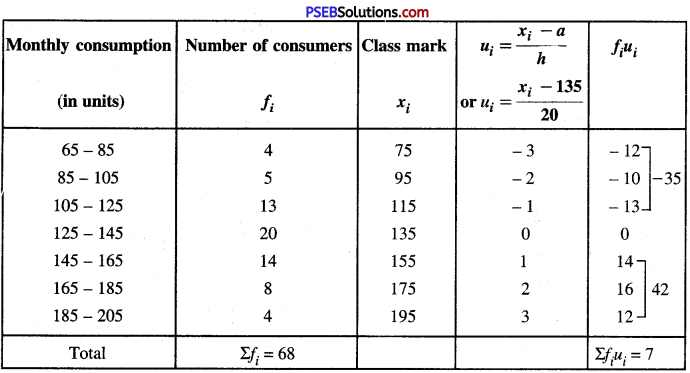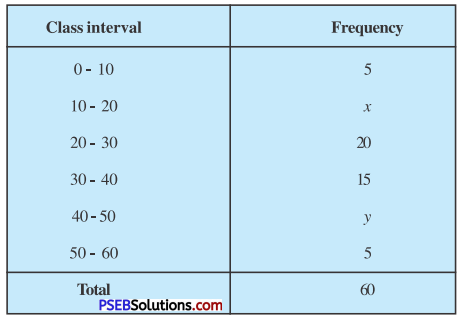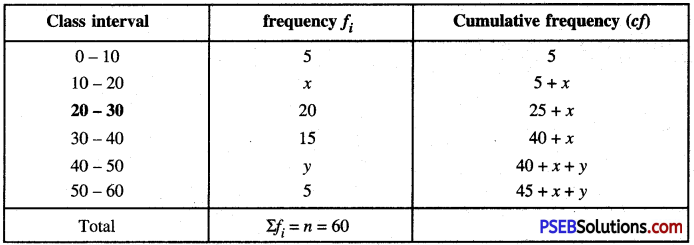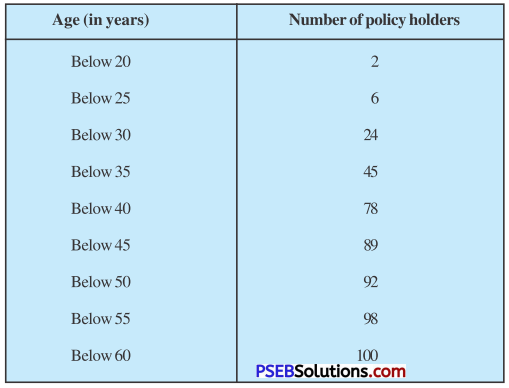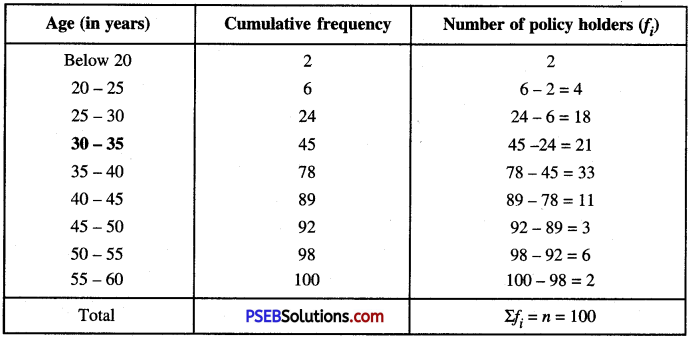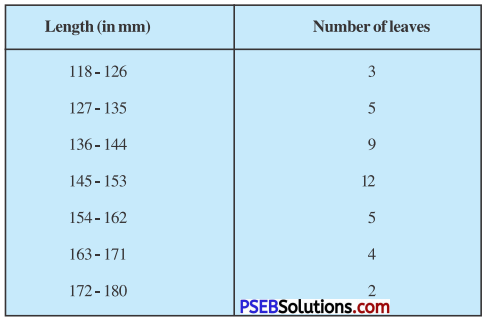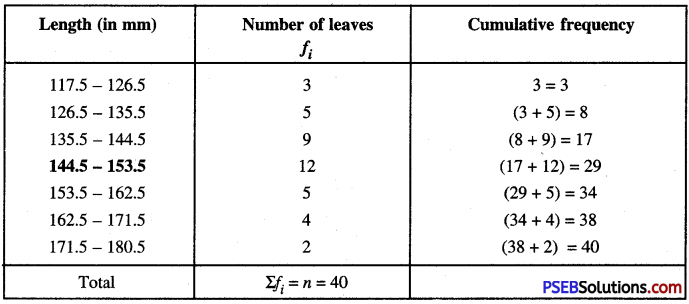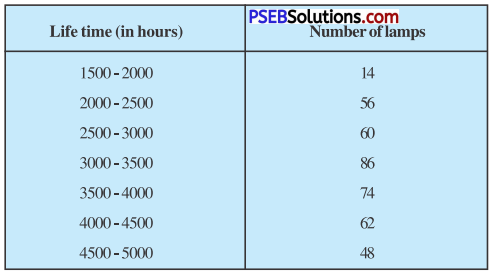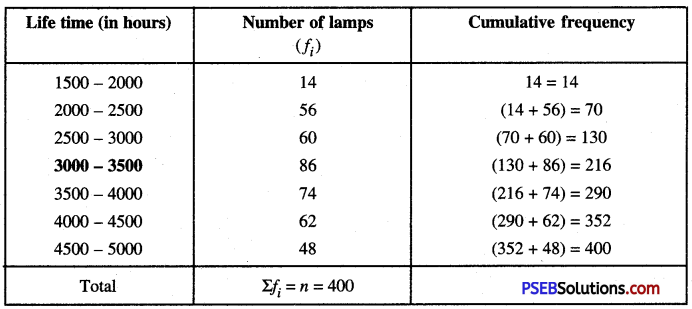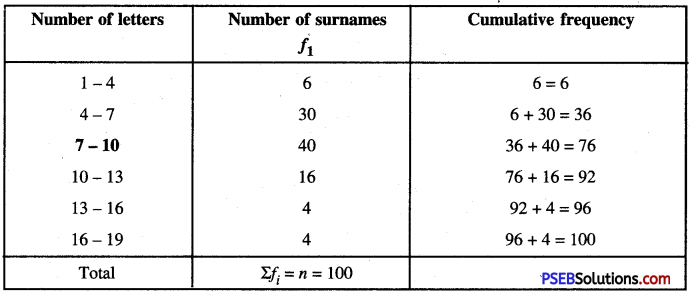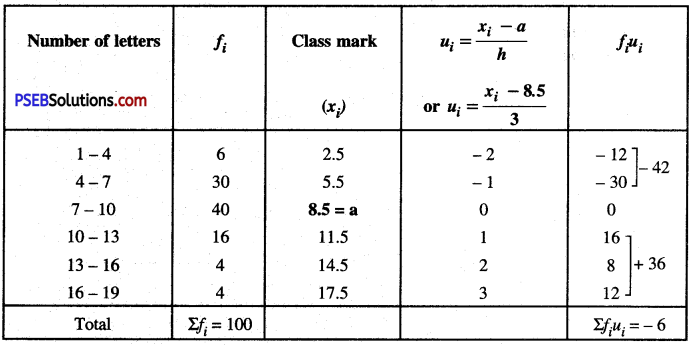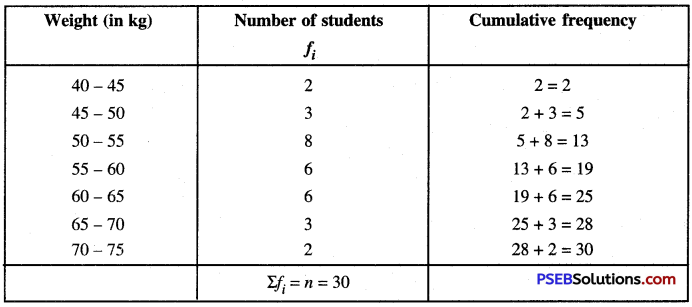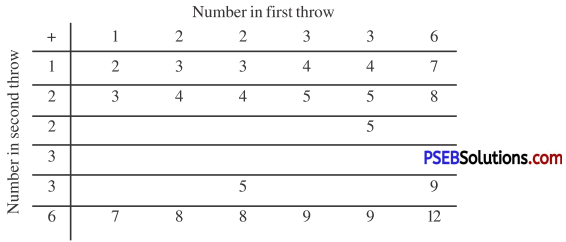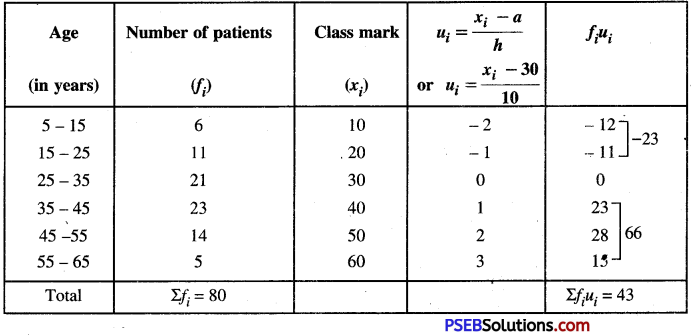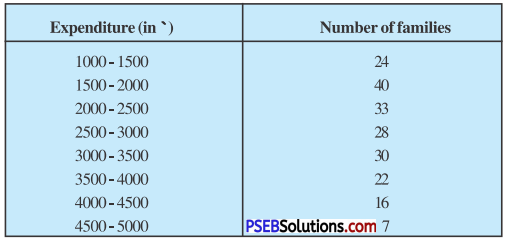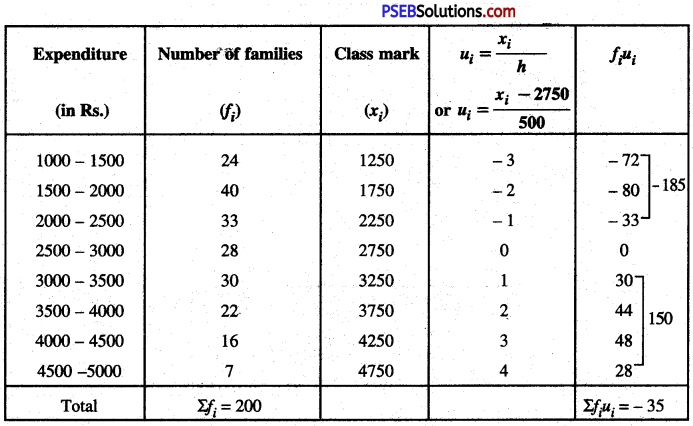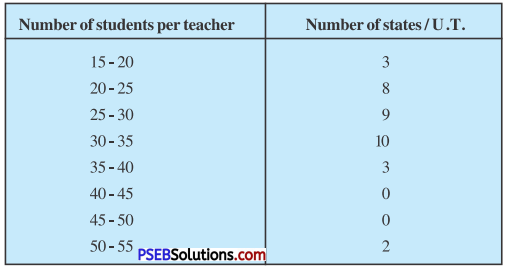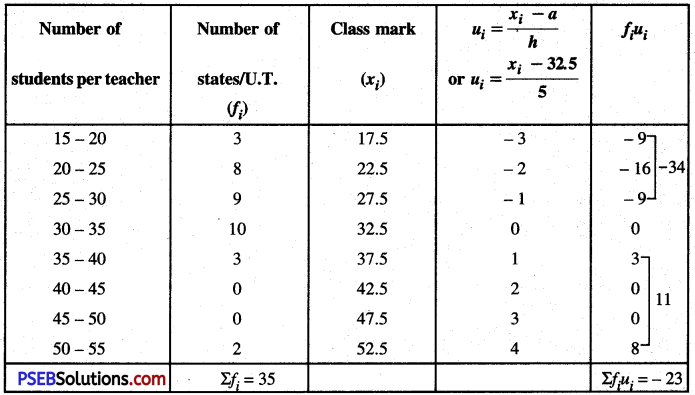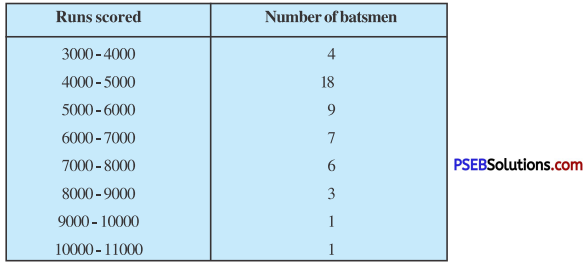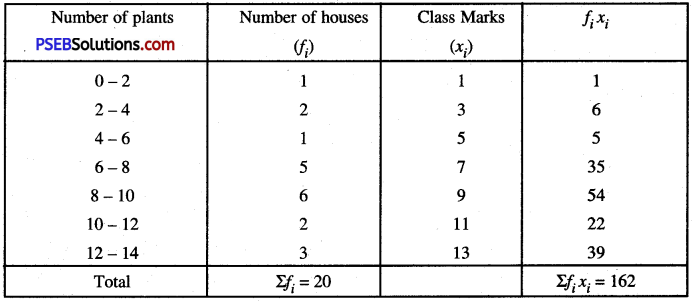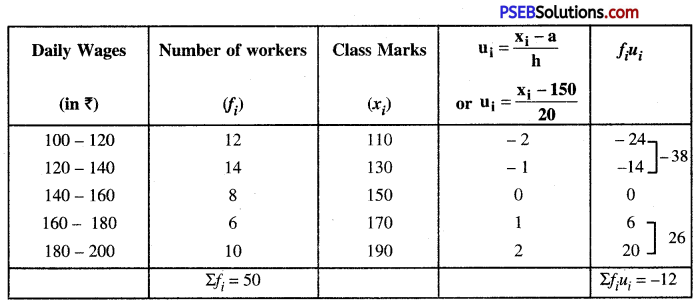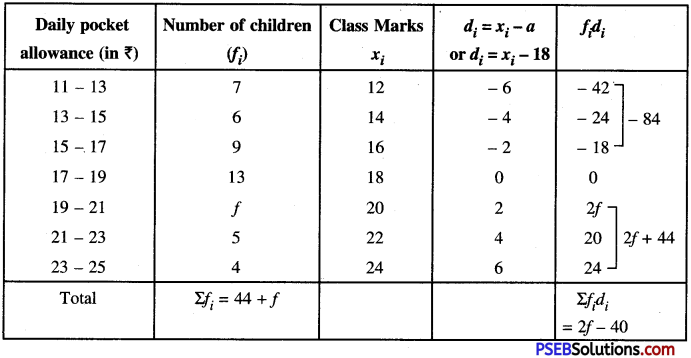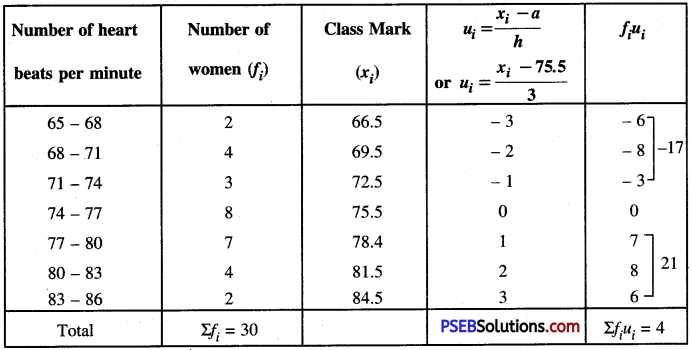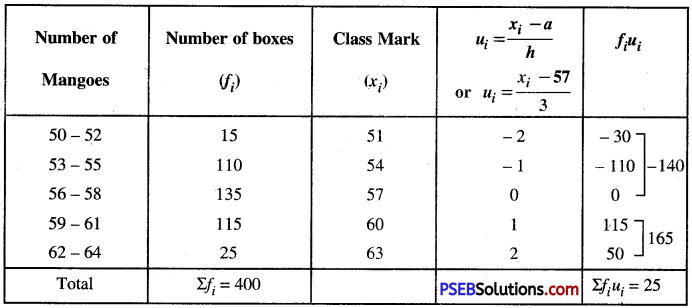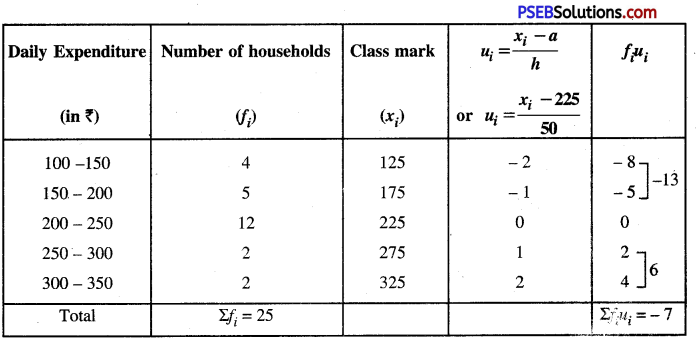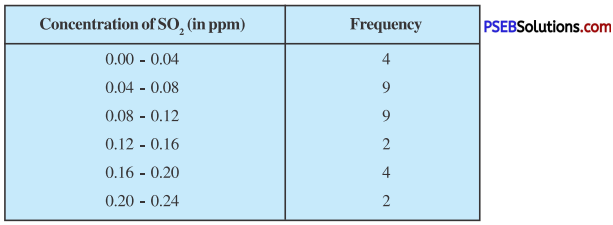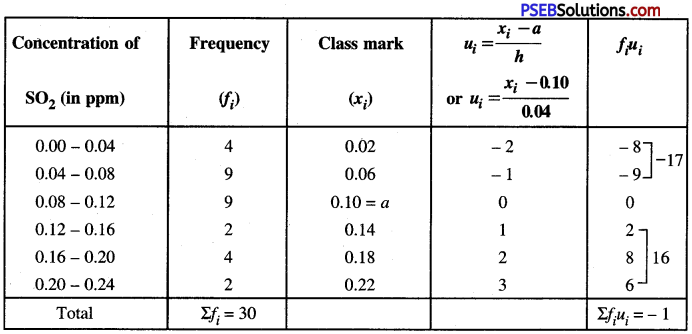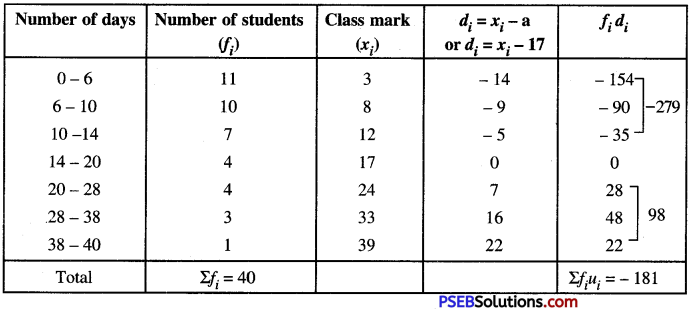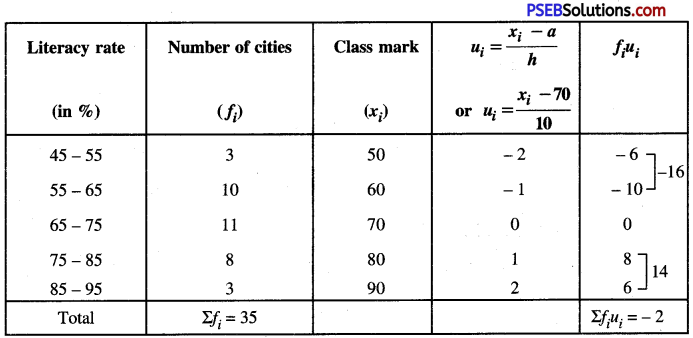Punjab State Board PSEB 10th Class Physical Education Book Solutions Chapter 4 ਏਸ਼ੀਅਨ ਅਤੇ ਉਲੰਪਿਕ ਖੇਡਾਂ Textbook Exercise Questions, and Answers.
PSEB Solutions for Class 10 Physical Education Chapter 4 ਏਸ਼ੀਅਨ ਅਤੇ ਉਲੰਪਿਕ ਖੇਡਾਂ
Physical Education Guide for Class 10 PSEB ਏਸ਼ੀਅਨ ਅਤੇ ਉਲੰਪਿਕ ਖੇਡਾਂ Textbook Questions and Answers
ਬਹੁਤ ਛੋਟੇ ਉੱਤਰਾਂ ਵਾਲੇ ਪ੍ਰਸ਼ਨ (Very Short Answer Type Questions)
ਪ੍ਰਸ਼ਨ 1.
ਓਲੰਪਿਕ ਖੇਡਾਂ ਦਾ ਨਾਂ ਓਲੰਪਿਕ ਕਿਉਂ ਪਿਆ ? (Why Olympic games are called Olympic ?)
ਉੱਤਰ-
ਪਾਚੀਨ ਓਲੰਪਿਕ ਖੇਡਾਂ ਓਲੰਪੀਆ ਨਾਮੀ ਨਗਰ ਵਿਚ ਆਰੰਭ ਹੋਈਆਂ ਸਨ, ਇਸ ਕਰਕੇ ਇਹਨਾਂ ਖੇਡਾਂ ਦਾ ਨਾਂ ਓਲੰਪਿਕ ਖੇਡਾਂ ਪਿਆ ।
ਪ੍ਰਸ਼ਨ 2.
ਪ੍ਰਾਚੀਨ ਖੇਡਾਂ ਕਦੋਂ ਸ਼ੁਰੂ ਹੋਈਆਂ ?(When Ancient Olympic games started ?)
ਉੱਤਰ-
ਪ੍ਰਾਚੀਨ ਓਲੰਪਿਕ ਖੇਡਾਂ 776 ਈ: ਪੂ: ਵਿਚ ਯੂਨਾਨ ਵਿਚ ਸ਼ੁਰੂ ਹੋਈਆਂ ।
ਪ੍ਰਸ਼ਨ 3.
ਓਲੰਪਿਕ ਝੰਡੇ ਵਿਚ ਕਿੰਨੇ ਰਿੰਗ ਹੁੰਦੇ ਹਨ ? (How many rings are these in Olympic Flag ?)
ਉੱਤਰ-
ਪੰਜ ਰਿੰਗ ।
ਪ੍ਰਸ਼ਨ 4.
ਪ੍ਰਾਚੀਨ ਓਲੰਪਿਕ ਖੇਡਾਂ ਦੇ ਵਿਜੇਤਾਵਾਂ ਨੂੰ ਕੀ ਇਨਾਮ ਮਿਲਦਾ ਸੀ ? (What prizes are given to the winner of Ancient Olympic ?)
ਉੱਤਰ-
ਵਿਜੇਤਾਵਾਂ ਨੂੰ ਜੀਅਸ ਦੇਵਤਾ ਦੇ ਮੰਦਰ ਵਿਚ ਲਿਜਾ ਕੇ ਜੈਤੁਨ ਰੁੱਖ ਦੀਆਂ ਟਹਿਣੀਆਂ ਅਤੇ ਪੱਤੇ ਭੇਟ ਕੀਤੇ ਜਾਂਦੇ ਸਨ ।
ਪ੍ਰਸ਼ਨ 5.
ਪਾਚੀਨ ਓਲੰਪਿਕ ਖੇਡਾਂ ਦੇ ਕੋਈ ਦੋ ਨਿਯਮ ਲਿਖੋ । (Write any two rules of Ancient Olympic.)
ਉੱਤਰ-
- ਇਹਨਾਂ ਖੇਡਾਂ ਵਿਚ ਭਾਗ ਲੈਣ ਵਾਲੇ ਸਭ ਖਿਡਾਰੀ ਯੂਨਾਨ ਦੇ ਨਾਗਰਿਕ ਹੋਣੇ ਚਾਹੀਦੇ ਹਨ ।
- ਕੋਈ ਵੀ ਕਿੱਤਾਕਾਰ (Professional) ਖਿਡਾਰੀ ਇਹਨਾਂ ਖੇਡਾਂ ਵਿਚ ਭਾਗ ਨਹੀਂ ਲੈ ਸਕਦਾ ਸੀ ।
ਪ੍ਰਸ਼ਨ 6.
ਨਵੀਨ ਓਲੰਪਿਕ ਖੇਡਾਂ ਕਿਸ ਨੇ ਸ਼ੁਰੂ ਕਰਵਾਈਆਂ ? (Who was the founder of Modern Olympic Games ?)
ਉੱਤਰ-
ਬੈਰਨ ਪਾਇਰ ਡੀ. ਕਬਰਟਿਨ ਨੇ ।
![]()
ਪ੍ਰਸ਼ਨ 7.
ਨਵੀਨ ਓਲੰਪਿਕ ਖੇਡਾਂ ਕਿੱਥੇ ਅਤੇ ਕਦੋਂ ਸ਼ੁਰੂ ਹੋਈਆਂ ? (When and where Modern Olympic were started ?)
ਉੱਤਰ-
ਨਵੀਨ ਓਲੰਪਿਕ ਖੇਡਾਂ 1896 ਈ: ਨੂੰ ਏਥਨਜ਼ ਵਿਚ ਸ਼ੁਰੂ ਹੋਈਆਂ ।
ਪ੍ਰਸ਼ਨ 8.
ਨਵੀਨ ਓਲੰਪਿਕ ਖੇਡਾਂ ਦੇ ਕੋਈ ਦੋ ਨਿਯਮ ਲਿਖ । (Write any two rules of Modern Olympic Games.)
ਉੱਤਰ-
- ਇਸ ਵਿਚ ਭਾਗ ਲੈਣ ਵਾਲੇ ਖਿਡਾਰੀ ਤੇ ਉਮਰ, ਜਾਤੀ, ਧਰਮ ਆਦਿ ਦਾ ਪਤੀਬੰਧ ਨਹੀਂ ਹੈ ।
- ਕੋਈ ਵੀ ਵਿਵਸਾਇਕ ਖਿਡਾਰੀ (Professional Player) ਓਲੰਪਿਕ ਖੇਡ ਵਿਚ ਭਾਗ ਨਹੀਂ ਲੈ ਸਕਦਾ ।
ਪ੍ਰਸ਼ਨ 9.
ਏਸ਼ਿਆਈ ਖੇਡਾਂ ਕਿਸ ਦੇ ਯਤਨ ਨਾਲ ਸ਼ੁਰੂ ਹੋਈਆਂ ? (Who has originated Asian Games ?)
ਉੱਤਰ-
ਮਹਾਰਾਜਾ ਪਟਿਆਲਾ ਸਰਦਾਰ ਯਾਦਵਿੰਦਰ ਸਿੰਘ ਅਤੇ ਜੀ. ਡੀ. ਸੋਂਧੀ ਦੇ ਯਤਨਾਂ ਨਾਲ ਇਹ ਖੇਡਾਂ ਸ਼ੁਰੂ ਹੋਈਆਂ ।
ਪ੍ਰਸ਼ਨ 10.
ਏਸ਼ਿਆਈ ਖੇਡਾਂ ਕਦੋਂ ਅਤੇ ਕਿੱਥੇ ਸ਼ੁਰੂ ਹੋਈਆਂ ? (When and where Asian Games were started ?)
ਉੱਤਰ-
ਪਹਿਲੀਆਂ ਏਸ਼ਿਆਈ ਖੇਡਾਂ 1951 ਨੂੰ ਨਵੀਂ ਦਿੱਲੀ ਦੇ ਨੈਸ਼ਨਲ ਸਟੇਡੀਅਮ ਵਿਚ ਹੋਈਆਂ ।
ਪ੍ਰਸ਼ਨ 11.
ਓਲੰਪਿਕ ਖੇਡਾਂ ਕਿੰਨੇ ਚਿਰ ਬਾਅਦ ਹੁੰਦੀਆਂ ਹਨ ? (After how many years Olympic games were held ?)
ਉੱਤਰ-
ਚਾਰ ਸਾਲ ਬਾਅਦ ।
![]()
ਪ੍ਰਸ਼ਨ 12.
ਪੰਜਵੀਆਂ ਏਸ਼ਿਆਈ ਖੇਡਾਂ ਕਿੱਥੇ ਹੋਈਆਂ ? (Where were the fifth Asian games were held ?)
ਉੱਤਰ-
ਇਹ ਖੇਡਾਂ 1966 ਵਿਚ ਜਕਾਰਤਾ (ਇੰਡੋਨੇਸ਼ੀਆ) ਵਿੱਚ ਹੋਈਆਂ ।
ਪ੍ਰਸ਼ਨ 13.
ਮਿਲਖਾ ਸਿੰਘ ਨੇ ਕਿਹੜੇ ਓਲੰਪਿਕ ਵਿਚ 400 ਮੀਟਰ ਦੀ ਦੌੜ ਵਿਚ ਚੌਥਾ ਸਥਾਨ ਹਾਸਿਲ ਕੀਤਾ ਸੀ ?(In which Olympic Mr. Milkha Singh got 4th position in 400 mt. race ?)
ਉੱਤਰ-
1984 ਓਲੰਪਿਕ ਵਿਚ ।
ਪ੍ਰਸ਼ਨ 14.
ਭਾਰਤ ਨੇ ਪਹਿਲੀ ਵਾਰ ਓਲੰਪਿਕ ਵਿਚ ਭਾਗ ਕਦੋਂ ਲਿਆ ਸੀ ? (In which year India participated in Olympic first time ?)
ਉੱਤਰ-
1920 ਦੇ ਓਲੰਪਿਕ ਵਿਚ ।
ਪ੍ਰਸ਼ਨ 15.
2008 ਬੀਜਿੰਗ ਉਲੰਪਿਕ ਖੇਡਾਂ ਵਿੱਚ ਕਿਸ ਭਾਰਤੀ ਖਿਡਾਰੀ ਨੇ ਸਵਰਨ ਪਦਕ ਜਿੱਤਿਆ ?
ਉੱਤਰ-
ਸ੍ਰੀ ਅਭੀਨਵ ਬਿੰਦਰਾ ਨੇ 2008 ਬੀਜਿੰਗ ਉਲੰਪਿਕ ਗੇਮ ਵਿੱਚ ਸੋਨੇ ਦਾ ਤਗਮਾ ਜਿੱਤਿਆ ।
ਛੋਟੇ ਉੱਤਰਾਂ ਵਾਲੇ ਪ੍ਰਸ਼ਨ (Short Answer Type Questions)
ਪ੍ਰਸ਼ਨ 1.
ਓਲੰਪਿਕ ਝੰਡੇ ਸੰਬੰਧੀ ਸੰਖੇਪ ਜਾਣਕਾਰੀ ਦਿਓ : (Give brief description about Olympic Flag.)
ਉੱਤਰ-
ਓਲੰਪਿਕ ਝੰਡਾ 1919 ਈ: ਵਿਚ ਇੱਟਵਰਪ (Antwerp) ਵਿਚ ਹੋਣ ਵਾਲੀਆਂ ਓਲੰਪਿਕ ਖੇਡਾਂ ਵਿਚ ਲਹਿਰਾਇਆ ਗਿਆ । ਇਸ ਝੰਡੇ ਦੀ ਰਚਨਾ ਕੁਬਰਟਿਨ ਨੇ ਕੀਤੀ ਸੀ । ਇਸ ਝੰਡੇ ਵਿਚ ਪੰਜ ਰੰਗਾਂ-ਲਾਲ, ਹਰਾ, ਪੀਲਾ, ਨੀਲਾ ਅਤੇ ਕਾਲਾ ਨਾਲ ਪੰਜ ਚੱਕਰ ਆਪਸ ਵਿਚ ਜੋੜ ਕੇ ਬਣਾਏ ਗਏ ਹਨ । ਇਹ ਪੰਜ ਚੱਕਰ ਯੂਰਪ, ਆਸਟਰੇਲੀਆ, ਏਸ਼ੀਆ, ਅਫ਼ਰੀਕਾ ਅਤੇ ਅਮਰੀਕਾ-ਪੰਜ ਮਹਾਂਦੀਪਾਂ ਦੀ ਪ੍ਰਤੀਨਿਧਤਾ ਕਰਦੇ ਹਨ । ਇਹਨਾਂ ਚੱਕਰਾਂ ਦਾ ਆਪਸ ਵਿਚ ਜੁੜੇ ਹੋਣਾ ਇਹਨਾਂ ਪੰਜ ਮਹਾਂਦੀਪਾਂ ਦੀ ਮਿੱਤਰਤਾ ਅਤੇ ਸਦਭਾਵਨਾ ਦਾ ਪ੍ਰਤੀਕ ਹੈ ।
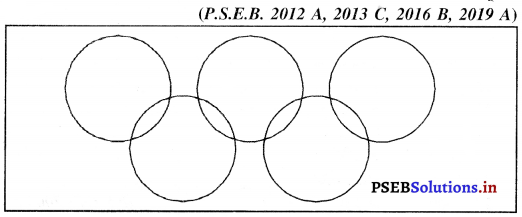
![]()
ਪ੍ਰਸ਼ਨ 2.
ਓਲੰਪਿਕ ਖੇਡਾਂ ਕਦੋਂ ਤੇ ਕਿਹੜੇ-ਕਿਹੜੇ ਦੇਸ਼ ਵਿਚ ਹੋਈਆਂ ? (When and where Olympic Games are organised ?)
ਉੱਤਰ-
ਪਹਿਲੀਆਂ ਓਲੰਪਿਕ ਖੇਡਾਂ ਦੇ ਸਥਾਨ ਤੇ ਤਾਰੀਖਾਂ
- 1896 – ਏਥਨਜ਼
- 1900 – ਪੈਰਿਸ
- 1904 – ਸੇਂਟ ਲੂਈਸ
1906* – ਏਥਨਜ਼ - 1908 – ਲੰਦਨ
- 1916 – ਸਟਾਕਹੋਮ .
- 1918 – ਬਰਲਿਨ
- 1920 – ਅੰਦੀਪ
- 1924 – ਪੈਰਿਸ
- 1928 – ਐਮਸਟਰਡਮ
- 1932 – ਲਾਸ ਏਂਜਲਸ
- 1936 – ਬਰਲਿਨ
- 1940 – ਟੋਕੀਓ (ਉਸ ਸਮੇਂ ਹੇਲਸਿੰਕੀ)
- 1944 – ਲੰਦਨ
*1904 ਦੀਆਂ ਖੇਡਾਂ ਆਧੁਨਿਕ ਖੇਡਾਂ ਦੀ 10ਵੀਂ ਵਰ੍ਹੇ ਗੰਢ ਆਉਣ ਲਈ ਕਰਾਈਆਂ ਗਈਆਂ ਪਰ ਉਨ੍ਹਾਂ ਦੀ ਗਿਣਤੀ ਨਹੀਂ ਕੀਤੀ ਗਈ ਕਿਉਂਕਿ ਇਹ ਖੇਡਾਂ 1904-1908 ਦੇ ਉਲੰਪਿਕ ਦੇ ਪਹਿਲੇ ਵਰੇ ਵਿਚ ਨਹੀਂ ਸਨ ਕਰਵਾਈਆਂ ਗਈਆਂ ।

- 1960 – ਰੋਮ
- 1964 – ਟੋਕੀਓ
- 1968 – ਮੈਕਸੀਕੋ ਸ਼ਹਿਰ
- 1972 – ਮਿਉਨਿਖ
- 1976 – ਮਾਂਟਰੀਆਲ
- 1980 – ਮਾਸਕੋ
- 1984 – ਲਾਸ ਏਂਜਲਸ
- 1988 – ਸਿਉਲ
- 1992 – ਬਾਰਸੀਲੋਨਾ
- 1996 – ਅਟਲਾਂਟੀਕਾ
- 2000 – ਸਿਡਨੀ
- 2004 – ਐਥਨ
- 2008 – ਚੀਨ
- 2012 – ਲੰਡਨ
- 2016 – ਰਿਓ
- 2020 – ਟੋਕੀਓ (ਜਾਪਾਨ)
ਵੱਡੇ ਉੱਤਰਾਂ ਵਾਲੇ ਪ੍ਰਸ਼ਨ (Long Answer Type Questions)
ਪ੍ਰਸ਼ਨ 1.
ਪ੍ਰਾਚੀਨ ਓਲੰਪਿਕ ਖੇਡਾਂ ਕਿੱਥੇ, ਕਦੋਂ ਤੇ ਕਿਉਂ ਸ਼ੁਰੂ ਹੋਈਆਂ ? [ਅਭਿਆਸ ਪ੍ਰਸ਼ਨ – 1] (When, where and why Ancient Olympic was organised ?)
ਉੱਤਰ-
ਇਤਿਹਾਸ (History) – ਪ੍ਰਾਚੀਨ ਓਲੰਪਿਕ ਖੇਡਾਂ 776 ਈ: ਪੂ: ਵਿਚ ਯੂਨਾਨ ਦੇ ਉਲੰਪੀਆ ਨਾਮੀ ਨਗਰ ਵਿਚ ਆਰੰਭ ਹੋਈਆਂ । ਇਹਨਾਂ ਖੇਡਾਂ ਨੂੰ ਆਰੰਭ ਕਰਨ ਦਾ ਸਿਹਰਾ ਇਫਿਟਸ ਅਤੇ ਕਲਾਉਸਥੈਨੀਥ ਨੂੰ ਦਿੱਤਾ ਜਾਂਦਾ ਹੈ । ਇਹ ਅਗਸਤ ਅਤੇ ਸਤੰਬਰ ਮਹੀਨੇ ਦੀ ਪੁੰਨਿਆਂ ਦੀ ਰਾਤ ਨੂੰ ਆਰੰਭ ਹੋਈਆਂ । ਪਹਿਲੀਆਂ ਓਲੰਪਿਕ ਖੇਡਾਂ ਦੇ ਜੇਤੂ ਦਾ | ਨਾਂ ਕੋਰਬਸ ਸੀ । ਇਹ ਖੇਡਾਂ ਹਰ ਸਾਲ ਦੇ ਬਾਅਦ ਪ੍ਰਬੰਧਿਤ ਕੀਤੀਆਂ ਜਾਂਦੀਆਂ ਸਨ । 394 ਈ: ਪੂ: ਵਿਚ ਰੋਮ ਸਮਰਾਟ ਥੀਓਡੀਸੀਅਜ ਦੇ ਹੁਕਮ ਨਾਲ ਇਹ ਖੇਡਾਂ ਬੰਦ ਹੋ ਗਈਆਂ । ਉਲੰਪੀਆ ਨਗਰ ਏਲਿਸ ਨਦੀ ਦੇ ਤੱਟ ‘ਤੇ ਵਸਿਆ ਹੋਇਆ ਸੀ । ਇਹ ਏਲਿਜ ਰਾਜ ਦਾ
**ਇੱਥੇ ਸਿਰਫ ਘੋੜ-ਸਵਾਰੀ ਦੀਆਂ ਹੀ ਖੇਡਾਂ ਕਰਵਾਈਆਂ ਗਈਆਂ ਸਨ ।
ਪਵਿੱਤਰ ਨਗਰ ਸੀ 1100 ਈ: ਪੂ: ਵਿਚ ਇਹਨਾਂ ਖੇਡਾਂ ਲਈ ਵਿਸ਼ੇਸ਼ ਜਗਾ ਬਣ ਗਈ ਜਿਸ ਦੀ ਪੂਜਾ ਮੰਦਰ ਦੀ ਤਰ੍ਹਾਂ ਹੋਣ ਲੱਗੀ । ਉਲੰਪਿਕ ਖੇਡਾਂ ਦੇ ਸ਼ੁਰੂ ਹੋਣ ਤੇ ਸਾਰੇ ਯੂਨਾਨ
ਵਿਚ ਲੜਾਈਆਂ ਬੰਦ ਹੋ ਜਾਂਦੀਆਂ ਸਨ । ਉਲੰਪੀਆ ਨਗਰ ਵਿਚ ਕੋਈ ਵੀ ਸ਼ਸਤਰਾਂ ਦੇ ਨਾਲ | ਪ੍ਰਵੇਸ਼ ਨਹੀਂ ਕਰ ਸਕਦਾ ਸੀ । ਇਹ ਖੇਡਾਂ ਯੂਨਾਨੀ ਦੇਵਤਾ ਜੀਅਸ ਦੇ ਨਾਲ ਸੰਬੰਧਿਤ ਹਨ ।
ਖੇਡਾਂ (Sports) – ਪ੍ਰਾਚੀਨ ਓਲੰਪਿਕ ਖੇਡਾਂ ਵਿਚ ਪਹਿਲਾਂ ਦੌੜ (Race) ਹੀ ਹੁੰਦੀ ਸੀ । ਇਹ ਲਗਪਗ 100 ਗਜ਼ ਲੰਬੀਆਂ ਸਨ । 724 ਈ: ਪੂ: ਵਿਚ 400 | ਗਜ਼ ਦੀ ਦੌੜ ਦਾ ਵਾਧਾ ਕੀਤਾ ਗਿਆ । ਪੰਦਰਵੀਆਂ ਓਲੰਪਿਕ ਖੇਡਾਂ ਵਿਚ ਤਿੰਨ ਮੀਲ ਦੀ ਦੌੜ ਦਾ ਵਾਧਾ ਕੀਤਾ ਗਿਆ । 18ਵੀਂ ਓਲੰਪਿਕਸ ਵਿਚ ਪੈਂਟਾਥਲੋਨ (Pentathlon) ਸ਼ੁਰੂ | ਕੀਤੀ ਗਈ । ਇਸ ਵਿਚ ਲੰਮੀ ਛਾਲ, ਦੋ ਸੌ ਗਜ਼ ਦੀ ਦੌੜ, ਨੇਜ਼ਾ ਸੁੱਟਣਾ ਅਤੇ ਕੁਸ਼ਤੀਆਂ | ਪੰਜ ਖੇਡਾਂ ਰੱਖੀਆਂ ਗਈਆਂ । 25ਵੀਂ ਓਲੰਪਿਕਸ ਵਿਚ ਰੱਥ ਦੌੜ (Chariot Race) ਅਤੇ |30ਵੀਂ ਓਲੰਪਿਕਸ ਵਿਚ ਮੁੱਕੇਬਾਜ਼ੀ, ਪਾਣੀ ਦੀਆਂ ਖੇਡਾਂ, ਕੁਸ਼ਤੀਆਂ ਅਤੇ ਪੈਕਪ੍ਰੀਅਮ ਆਦਿ ਖੇਡਾਂ ਸ਼ਾਮਲ ਕੀਤੀਆਂ ਗਈਆਂ । ਇਹ ਖੇਡਾਂ ਤਿੰਨ ਤੋਂ ਪੰਜ ਦਿਨ ਤਕ ਚਲਦੀਆਂ ਸਨ । | ਪਹਿਲਾਂ ਇਸਤਰੀਆਂ ਇਹਨਾਂ ਖੇਡਾਂ ਵਿਚ ਭਾਗ ਨਹੀਂ ਲੈ ਸਕਦੀਆਂ ਸਨ ਪਰ ਬਾਅਦ ਵਿਚ ਇਸਤਰੀਆਂ ਲਈ ਵੀ ਦਰਵਾਜ਼ੇ ਖੋਲ੍ਹ ਦਿੱਤੇ ਗਏ ।
ਇਨਾਮ (Rewards) – ਇਹਨਾਂ ਖੇਡਾਂ ਦੇ ਜੇਤੂਆਂ ਨੂੰ ਖੂਬ ਸਨਮਾਨਿਤ ਕੀਤਾ ਜਾਂਦਾ ਸੀ । ਉਹਨਾਂ ਨੂੰ ਜੀਅਸ ਦੇਵਤਾ ਦੇ ਮੰਦਰ ਵਿਚ ਲੈ ਜਾ ਕੇ ਜੈਤਨ ਰੁੱਖ ਦੀਆਂ ਟਹਿਣੀਆਂ ਅਤੇ ਪੱਤੇ ਭੇਂਟ ਕੀਤੇ ਜਾਂਦੇ ਸਨ । ਲੋਕ ਉਹਨਾਂ ਦੀ ਜਿੱਤ ਦੇ ਜੇਤੂ | ਗੀਤ ਗਾਉਂਦੇ ਸਨ । ਜੇਤੂਆਂ ਦੇ ਨਾਂ ਤੇ ਖੇਡਾਂ ਦੇ ਨਾਂ ਰੱਖੇ ਜਾਂਦੇ ਸਨ । ਜੇਤੂਆਂ ਦੇ ਸਾਥੀ ਵਾਜਾ | ਵਜਾ ਕੇ ਉਹਨਾਂ ਦੇ ਘਰ ਛੱਡ ਆਉਂਦੇ ਸਨ । ਜੇਤੂ ਖਿਡਾਰੀਆਂ ਤੇ ਦੇਸ਼ ਮਾਣ ਕਰਦਾ ਜਾਂ ਸਭ ਯੂਨਾਨੀ ਇਹਨਾਂ ਖੇਡਾਂ ਵਿਚ ਜਿੱਤ ਪ੍ਰਾਪਤ ਕਰਨ ਦੀ ਹਾਰਦਿਕ ਕਾਮਨਾ ਕਰਦੇ ਸਨ ।
ਸਮਾਪਤੀ (End) – ਸਮੇਂ ਦੀ ਗਤੀ ਦੇ ਨਾਲ ਇਹ ਖੇਡਾਂ ਲੋਕਪ੍ਰਿਯ ਹੁੰਦੀਆਂ ਗਈਆਂ ਅਤੇ ਹੋਰ ਦੇਸ਼ਾਂ ਅਤੇ ਰਾਸ਼ਟਰਾਂ ਨੇ ਵੀ ਭਾਗ ਲੈਣਾ ਆਰੰਭ ਕਰ ਦਿੱਤਾ । ਰੋਮਨਾਂ ਦੁਆਰਾ ਯੂਨਾਨ ਦੀ ਜਿੱਤ ਦੇ ਬਾਅਦ ਇਹਨਾਂ ਖੇਡਾਂ ਦੀ ਲੋਕਪ੍ਰਿਯਤਾ ਨੂੰ ਠੇਸ ਪੁੱਜੀ । ਕਈ ਕਿੱਤਾਕਾਰ (Professional) ਖਿਡਾਰੀ ਇਹਨਾਂ ਵਿਚ ਭਾਗ ਲੈਣ ਲੱਗੇ । ਇਸ | ਨਾਲ ਖੇਡਾਂ ਵਿਚ ਕਈ ਬੁਰਾਈਆਂ ਘਰ ਕਰ ਗਈਆਂ । ਰੋਮਨ ਸਮਰਾਟ ਥੀਓਜੀਸੀਅਸ ਦੇ | ਆਦੇਸ਼ ਨਾਲ 394 ਈ: ਪੂ: ਵਿਚ ਇਹ ਖੇਡਾਂ ਬੰਦ ਕਰ ਦਿੱਤੀਆਂ ਗਈਆਂ । 395 ਈ: ਪੂ: ਵਿਚ ਜੀਅਸ ਦੇਵਤਾ ਦਾ ਬੁੱਤ ਵੀ ਤੋੜ ਦਿੱਤਾ ਗਿਆ । ਓਲੰਪਿਕ ਨਗਰ ਦੀ ਰੌਣਕ ਖ਼ਤਮ | ਹੋ ਗਈ । ਰੋਮਨ ਸਮਰਾਟ ਥੀਓਡੀਸੀਅਸ ਦੁਜੇ ਨੇ ਸਟੇਡੀਅਮ ਵੀ ਨਸ਼ਟ ਕਰਵਾ ਦਿੱਤੇ । ਇਸ ਤਰ੍ਹਾਂ ਕੁੱਝ ਸਮੇਂ ਤਕ ਓਲੰਪਿਕ ਖੇਡਾਂ ਅਤੇ ਓਲੰਪਿਕ ਨਗਰ ਦੇ ਚਿੰਨ੍ਹ ਹੀ ਮਿਟ ਗਏ ।’
![]()
ਪ੍ਰਸ਼ਨ 2.
ਪਾਚੀਨ ਓਲੰਪਿਕ ਖੇਡਾਂ ਦੇ ਕੀ ਨਿਯਮ ਸਨ ਅਤੇ ਕਿਹੜੀਆਂ-ਕਿਹੜੀਆਂ ਖੇਡਾਂ ਕਰਵਾਈਆਂ ਜਾਂਦੀਆਂ ਹਨ ? [ਅਭਿਆਸ ਦਾ ਪ੍ਰਸ਼ਨ-2] (What were the main Rules of the Ancient Olympic Games ? Which were the different games organised ?)
ਉੱਤਰ-
ਪ੍ਰਾਚੀਨ ਓਲੰਪਿਕ ਖੇਡਾਂ ਦੇ ਨਿਯਮ (Rules of Ancient Olympics) – ਪ੍ਰਾਚੀਨ ਓਲੰਪਿਕ ਖੇਡਾਂ ਵਿਚ ਭਾਗ ਲੈਣ ਲਈ ਹੇਠ ਲਿਖੇ ਨਿਯਮਾਂ ਦਾ ਪਾਲਣ ਕਰਨਾ ਬਹੁਤ ਜ਼ਰੂਰੀ ਸੀ-
- ਇਹਨਾਂ ਖੇਡਾਂ ਵਿਚ ਭਾਗ ਲੈਣ ਵਾਲੇ ਸਭ ਖਿਡਾਰੀ ਯੂਨਾਨ ਦੇ ਨਾਗਰਿਕ ਹੋਣੇ ਚਾਹੀਦੇ ਹਨ ।
- ਖਿਡਾਰੀ ਲਈ ਖੇਡਾਂ ਵਿਚ ਭਾਗ ਲੈਣ ਤੋਂ ਪਹਿਲਾਂ ਕਿਸੇ ਵੀ ਦੇਖ-ਰੇਖ ਵਿਚ 10 ਮਹੀਨਿਆਂ ਤਕ ਟਰੇਨਿੰਗ ਲੈਣਾ ਜ਼ਰੂਰੀ ਸੀ । ਉਸ ਨੂੰ ਅਖ਼ੀਰਲਾ ਇਕ ਮਹੀਨਾ ਉਲੰਪੀਆ ਵਿਚ ਬਤੀਤ ਕਰਨਾ ਪੈਂਦਾ ਸੀ ।
- ਕੋਈ ਵੀ ਕਿੱਤਾਕਾਰ (Professional) ਖਿਡਾਰੀ ਇਹਨਾਂ ਖੇਡਾਂ ਵਿਚ ਭਾਗ ਨਹੀਂ ਲੈ ਸਕਦਾ ਸੀ ।
- ਆਰੰਭ ਵਿਚ ਔਰਤਾਂ ਨੂੰ ਨਾ ਤਾਂ ਖੇਡਾਂ ਵਿਚ ਭਾਗ ਲੈਣ ਅਤੇ ਨਾ ਹੀ ਇਹਨਾਂ ਨੂੰ ਵੇਖਣ ਦੀ ਆਗਿਆ ਸੀ ।
- ਖਿਡਾਰੀਆਂ ਨੂੰ ਖੇਡਾਂ ਵਿਚ ਠੀਕ ਢੰਗ ਨਾਲ ਭਾਗ ਲੈਣ ਦੀ ਸਹੁੰ ਲੈਣੀ ਪੈਂਦੀ ਸੀ ।
- ਖਿਡਾਰੀਆਂ ਤੇ ਕਿਸੇ ਕਿਸਮ ਦੇ ਅਪਰਾਧ ਦਾ ਅਰੋਪ ਨਹੀਂ ਹੋਣਾ ਚਾਹੀਦਾ ।
- ਪਹਿਲਾ ਅਤੇ ਅੰਤਿਮ ਦਿਨ ਧਾਰਮਿਕ ਰੀਤੀਆਂ ਅਤੇ ਬਲੀਆਂ ਲਈ ਨਿਸਚਿਤ ਸੀ ।
ਖੇਡਾਂ (Sports) – ਪ੍ਰਾਚੀਨ ਓਲੰਪਿਕ ਖੇਡਾਂ ਵਿਚ ਪਹਿਲਾਂ ਤਾਂ ਕੇਵਲ ਇਕ ਦੌੜ ਸ਼ਾਮਲ ਸੀ, ਪਰ ਹੌਲੀ-ਹੌਲੀ ਇਸ ਵਿਚ ਹੋਰ ਖੇਡਾਂ ਸ਼ਾਮਲ ਹੋ ਗਈਆਂ । ਇਹ ਦੌੜ ਲਗਪਗ 100 ਗਜ਼ ਲੰਬੀ ਸੀ । 724 ਈ: ਪੂ: ਵਿਚ ਪ੍ਰਬੰਧਿਤ 14ਵੀਂ ਓਲੰਪਿਕ ਖੇਡਾਂ ਵਿਚ 400 ਗਜ਼ ਦੀ ਦੌੜ ਵਿਚ ਪੈਂਟਾਥਲੋਨ ਆਰੰਭ ਕੀਤੀ ਗਈ । ਇਸ ਵਿਚ ਲੰਮੀ ਛਾਲ, ਨੇਜ਼ਾ ਬਾਜ਼ੀ, 200 ਗਜ਼ ਦੌੜ ਅਤੇ 15ਵੀਂ ਓਲੰਪਿਕਸ ਵਿਚ 3 ਮੀਲ ਦੀ ਦੌੜ ਸ਼ਾਮਲ ਕੀਤੀ ਗਈ । 18ਵੀਂ ਓਲੰਪਿਕ ਖੇਡਾਂ ਵਿਚ ਪੈਂਟਾਥਲੋਨ ਆਰੰਭ ਕੀਤੀ ਗਈ । ਇਸ ਵਿਚ ਲੰਮੀ ਛਾਲ, ਨੇਜ਼ਾਬਾਜ਼ੀ, 200 ਗਜ਼ ਦੌੜ, ਡਿਸਕਸ ਥਰੋ ਅਤੇ ਕੁਸ਼ਤੀਆਂ ਪੰਜ ਖੇਡਾਂ ਆਉਂਦੀਆਂ ਸਨ । 23ਵੀਂ ਓਲੰਪਿਕ ਖੇਡਾਂ ਵਿਚ ਅਤੇ 25ਵੀਂ ਓਲੰਪਿਕਸ ਵਿਚ 3 ਮੀਲ ਦੀ ਦੌੜ ਸ਼ਾਮਲ ਕੀਤੀ ਗਈ । 28ਵੀਂ ਓਲੰਪਿਕਸ ਖੇਡਾਂ ਵਿਚ ਰਥ ਦੌੜ ਅਤੇ 30ਵੀਂ ਓਲੰਪਿਕ ਖੇਡਾਂ ਵਿਚ ਪਾਣੀ ਦੀਆਂ ਖੇਡਾਂ ਨੂੰ ਥਾਂ ਦਿੱਤੀ ਗਈ । ਇਹ ਖੱਡਾਂ 3 ਤੋਂ 5 ਦਿਨ ਤਕ ਚਲਦੀਆਂ ਸਨ । ਪਹਿਲਾਂ ਇਸਤਰੀਆਂ ਇਹਨਾਂ ਖੇਡਾਂ ਵਿਚ ਭਾਗ ਨਹੀਂ ਲੈ ਸਕਦੀਆਂ ਸਨ, ਪਰ ਬਾਅਦ ਵਿਚ ਉਹਨਾਂ ਨੂੰ ਆਗਿਆ ਦੇ ਦਿੱਤੀ ਗਈ ।
ਪ੍ਰਸ਼ਨ 3.
ਨਵੀਨ ਓਲੰਪਿਕ ਖੇਡਾਂ ਕਿਸ ਨੇ ਸ਼ੁਰੂ ਕਰਵਾਈਆਂ ਅਤੇ ਉਸ ਬਾਰੇ ਤੁਸੀਂ ਕੀ ਜਾਣਦੇ ਹੋ ? [ਅਭਿਆਸ ਪ੍ਰਸ਼ਨ] (Who has started Modern Olympic Games ? What do you know about him ?)
ਉੱਤਰ-
14ਵੀਂ ਸਦੀ ਤਕ ਓਲੰਪਿਕ ਖੇਡਾਂ ਦੇ ਮਹੱਤਵ ਵਲ ਕਿਸੇ ਨੇ ਜ਼ਰਾ ਧਿਆਨ ਨਾ, ਦਿੱਤਾ | ਪਰ ਇਹਨਾਂ ਖੇਡਾਂ ਦਾ ਪੁਨਰ-ਜਨਮ ਲਿਖਿਆ ਹੋਇਆ ਸੀ । 1829 ਈ: ਵਿਚ ਜਾਪਾਨੀ ਅਤੇ ਫ਼ਰਾਂਸੀਸੀ ਵਿਗਿਆਨਕਾਂ ਨੇ ਓਲੰਪੀਆ ਦੀ ਖੁਦਾਈ ਦਾ ਕੰਮ ਆਰੰਭ ਕੀਤਾ । ਸਾਲਾਂ ਦੇ ਯਤਨਾਂ ਦੇ ਬਾਅਦ ਉਹਨਾਂ ਦੇ ਹੱਥ ਸਫ਼ਲਤਾ ਲੱਗੀ । ਇਹਨਾਂ ਖੁਦਾਈਆਂ ਨਾਲ ਉਲੰਪੀਆ ਦੇ ਮੰਦਰ ਅਤੇ ਸਟੇਡੀਅਮ ਪ੍ਰਾਪਤ ਹੋਏ । | ਬੈਰਨ ਦਿ ਕਿਊਬਰਟਿਨ ਨੂੰ ਨਵੀਨ ਓਲੰਪਿਕ ਖੇਡਾਂ ਦਾ ਜਨਮ ਦਾਤਾ ਮੰਨਿਆ ਜਾਂਦਾ ਹੈ । ਉਹਨਾਂ ਦਾ ਜਨਮ 1863 ਈ: ਵਿਚ ਫ਼ਰਾਂਸ ਵਿਚ ਹੋਇਆ । ਉਹ ਫ਼ਰਾਂਸ ਦੇ ਸਿੱਖਿਆ ਵਿਭਾਗ ਵਿਚ ਕੰਮ ਕਰਦੇ ਸਨ । ਉਹਨਾਂ ਦੀ ਸਰੀਰਕ ਸਿੱਖਿਆ ਵਿਚ ਵਿਸ਼ੇਸ਼ ਰੁਚੀ ਸੀ । 1854 ਈ: ਵਿਚ ਉਹ ਇੰਗਲੈਂਡ ਦੇ ਦੌਰੇ ‘ਤੇ ਗਏ । ਉਹ ਇੰਗਲੈਂਡ ਦੇ ਸਿੱਖਿਅਕ ਢਾਂਚੇ ਤੋਂ ਬਹੁਤ ਪ੍ਰਭਾਵਿਤ ਹੋਏ ।
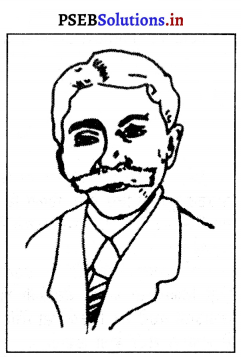
ਕਿਉਬਰਟਿਨ ਬਰਤਾਨੀਆ ਅਤੇ ਅਮਰੀਕਾ ਗਏ । ਉੱਥੇ ਉਹਨਾਂ ਨੇ ਲੋਕਾਂ ਨੂੰ ਆਪਣੀਆਂ ਯੋਜਨਾਵਾਂ ਤੋਂ ਜਾਣੂ ਕਰਵਾਇਆ । ਇਸ ਤੇ ਹੋਰ ਖੇਡ ਪ੍ਰੇਮੀਆਂ ਨੇ ਉਹਨਾਂ ਨੂੰ ਸਹਾਇਤਾ ਦੇਣ ਦਾ ਸਮਰਥਨ ਕੀਤਾ । ਕਿਉਬਰਟਿਨ ਖੇਡਾਂ ਦੇ ਮਾਧਿਅਮ ਨਾਲ ਸਿਹਤ, ਸੁੰਦਰਤਾ, ਮਨੋਰੰਜਨ ਅਤੇ ਸਹਿਯੋਗ ਵਿਚ ਵਾਧਾ ਕਰਨਾ ਚਾਹੁੰਦੇ ਸਨ । ਉਹਨਾਂ ਨੇ ਭਿੰਨ-ਭਿੰਨ ਦੇਸ਼ਾਂ ਦਾ ਦੌਰਾ ਕੀਤਾ ਅਤੇ ਉੱਥੋਂ ਦੇ ਲੋਕਾਂ ਨੂੰ ਆਪਣੇ ਵਿਚਾਰ ਦੀ ਜਾਣਕਾਰੀ ਦਿੱਤੀ । ਉਹਨਾਂ ਨੇ ਫ਼ਰਾਂਸ ਵਿਚ ਫ਼ਰਾਂਸੀਸੀ ਖੇਡ ਸੰਘ ਦੀ ਆਧਾਰਸ਼ਿਲਾ ਰੱਖੀ । 16 ਜੂਨ, 1894 ਈ: ਨੂੰ ਇਕ ਅੰਤਰ-ਰਾਸ਼ਟਰੀ ਕਾਂਗਰਸ ਦੇ ਸਾਹਮਣੇ ਓਲੰਪਿਕ ਯੋਜਨਾ ਰੱਖੀ ਗਈ । ਇਸ ਦਾ ਸਭ ਨੇ ਸਮਰਥਨ ਕੀਤਾ । ਫਲਸਰੂਪ 5 ਅਪਰੈਲ, 1896 ਈ: ਤਕ ਪਹਿਲੀਆਂ ਓਲੰਪਿਕ ਖੇਡਾਂ ਦਾ ਪ੍ਰਬੰਧ ਕੀਤਾ ਗਿਆ । ਇਹਨਾਂ ਖੇਡਾਂ ਦੇ ਲਈ ਕਿਊਬਰਟਿਨ ਨੇ ਇਕ ਮਹਾਨ ਆਦਰਸ਼ ਪੇਸ਼ ਕੀਤਾ । ਉਹ ਆਦਰਸ਼ ਹੈ(P.S..B. 2004 C, 2005 C) ‘‘ਓਲੰਪਿਕ ਖੇਡਾਂ ਵਿਚ ਮਹੱਤਵਪੂਰਨ ਗੱਲ ਜਿੱਤ ਪ੍ਰਾਪਤ ਕਰਨਾ ਨਹੀਂ, ਸਗੋਂ ਉਹਨਾਂ ਵਿਚ ਭਾਗ ਲੈਣਾ ਹੈ । ਜਿਵੇਂ ਕਿ ਜੀਵਨ ਵਿਚ ਇਕ ਮਹੱਤਵਪੂਰਨ ਗੱਲ ਜਿੱਤ ਨਹੀਂ, ਸਗੋਂ ਸੰਘਰਸ਼ ਹੈ । ਜ਼ਰੂਰੀ ਗੱਲ ਜਿੱਤਣਾ ਨਹੀਂ, ਸਗੋਂ ਚੰਗੀ ਤਰ੍ਹਾਂ ਮੁਕਾਬਲਾ ਕਰਨਾ ਹੈ ।” (“The important thing in Olympics is not to win but to take part. As the important thing in life is not triumph but the struggle. The essential thing is not to have conquered but to have fought well.”’)
![]()
ਪ੍ਰਸ਼ਨ 4.
ਨਵੀਨ ਓਲੰਪਿਕ ਖੇਡਾਂ ਦੇ ਮਾਟੋ, ਸਹੁੰ ਅਤੇ ਝੰਡੇ ਬਾਰੇ ਲਿਖੋ । [ਅਭਿਆਸ-ਪ੍ਰਸ਼ਨ-4] (What is Olympic Motto, Olympic Flag and Olympic Oath of Modern Olympic Games ?)
ਉੱਤਰ –
ਓਲੰਪਿਕ ਮਾਟੋ (Olmypic Motto) – ਓਲੰਪਿਕ ਮਾਟੋ ਤਿੰਨ ਸ਼ਬਦਾਂ ਨਾਲ ਬਣਿਆ ਹੈ । ਇਹ ਤਿੰਨ ਸ਼ਬਦ ਹਨ –
ਸੀਟਿਅਸ (Citius) ਦਾ ਅਰਥ ਹੈ ਬਹੁਤ ਤੇਜ਼,
ਆਲਟੀਅਸ (Altius) ਦਾ ਅਰਥ ਹੈ ਬਹੁਤ ਉੱਚਾ,
ਫਰਟਿਅਸ (Fortius) ਦਾ ਅਰਥ ਹੈ ਬਹੁਤ ਜ਼ੋਰ ਨਾਲ ।
ਇਹ ਤਿੰਨ ਸ਼ਬਦ ਹੀ ਖਿਡਾਰੀ ਦੇ ਨਿਸ਼ਾਨੇ ਨੂੰ ਸੂਚਿਤ ਕਰਦੇ ਹਨ । ਇਨ੍ਹਾਂ ਦਾ ਭਾਵ ਹੈਬਹੁਤੇ ਤੇਜ਼ ਭੱਜਣਾ, ਬਹੁਤ ਉੱਚੀ ਛਾਲ ਲਗਾਉਣਾ ਅਤੇ ਬਹੁਤ ਜ਼ੋਰ ਨਾਲ ਡਿਸਕਸ ਜਾਂ ਗੋਲਾ ਸੁੱਟਣਾ ।
ਓਲੰਪਿਕ ਸਹੁੰ (Olympic Oath) – ਓਲੰਪਿਕ ਸੁਗੰਧ ਇਸ ਤਰ੍ਹਾਂ ਹੈ| ਇਹ ਰੀਤ 1920 ਵਿਚ ਅੰਤਦੀਪ ਵਿਖੇ ਸ਼ੁਰੂ ਹੋਈ । 1984 ਦੀਆਂ ਓਲੰਪਿਕ ਖੇਡਾਂ ਦੇ ਚਾਰਟਰ ਰੁਪ 63 ਵਿਚ ਕਿਹਾ ਗਿਆ ਕਿ ਮੇਜ਼ਬਾਨ ਰਾਸ਼ਟਰ ਦਾ ਇਕ ਖਿਡਾਰੀ ਆਪਣੇ ਖੱਬੇ ਹੱਥ ਵਿਚ ਓਲੰਪਿਕ ਝੰਡੇ ਦਾ ਕੋਨਾ ਫੜ ਕੇ ਅਤੇ ਆਪਣਾ ਸੱਜਾ ਹੱਥ ਖੜ੍ਹਾ ਕਰਕੇ ਹੇਠ ਲਿਖੀ ਸਹੁੰ ਚੁੱਕੇ :
“ਸਾਰੇ ਖਿਡਾਰੀਆਂ ਵੱਲੋਂ ਮੈਂ ਵਚਨ ਲੈਂਦਾ ਹਾਂ ਕਿ ਅਸੀਂ ਇਨ੍ਹਾਂ ਓਲੰਪਿਕ ਖੇਡਾਂ ਵਿਚ ਉਨ੍ਹਾਂ ਨਿਯਮਾਂ ਦਾ ਆਦਰ ਕਰਦਿਆਂ ਅਤੇ ਉਨ੍ਹਾਂ ਦੇ ਪਾਬੰਦ ਰਹਿੰਦਿਆਂ ਜੋ ਕਿ ਇਸ ਦੀ ਨਿਗਰਾਨੀ ਕਰਦੇ ਹਨ ਖਿਡਾਰੀ ਦੀ ਸੱਚੀ ਭਾਵਨਾ ਨਾਲ ਖੇਡਾਂ ਦੇ ਗੌਰਵ ਅਤੇ ਸਾਰੀਆਂ ਟੀਮਾਂ ਦੇ ਸਨਮਾਨ ਲਈ ਭਾਗ ਲਵਾਂਗੇ ।
ਓਲੰਪਿਕ ਝੰਡਾ
(Olympic Flag).
ਓਲੰਪਿਕ ਝੰਡਾ 1919 ਈ: ਵਿਚ ਏਟਵਰਪ (Antwerp) ਵਿਚ ਹੋਣ ਵਾਲੀਆਂ ਉਲੰਪਿਕ ਖੇਡਾਂ ਵਿਚ ਲਹਿਰਾਇਆ ਗਿਆ । ਇਸ ਝੰਡੇ ਦੀ ਰਚਨਾ, ਕੁਬਰਟਿਨ ਨੇ ਕੀਤੀ ਸੀ । ਇਸ ਝੰਡੇ ਵਿਚ ਪੰਜ ਰੰਗਾਂ ਲਾਲ, ਹਰਾ, ਪੀਲਾ, ਨੀਲਾ ਅਤੇ ਕਾਲਾ-ਨਾਲ ਪੰਜ ਚੱਕਰ ਆਪਸ ਵਿਚ ਜੋੜ ਕੇ ਬਣਾਏ ਗਏ ਹਨ । ਇਹ ਪੰਜ ਚੱਕਰ ਯੂਰਪ, ਆਸਟਰੇਲੀਆ, ਏਸ਼ੀਆ, ਅਫਰੀਕਾ ਅਤੇ ਅਮਰੀਕਾ-ਪੰਜ ਮਹਾਂਦੀਪਾਂ ਦੀ ਪ੍ਰਤੀਨਿਧਤਾ ਕਰਦੇ ਹਨ । ਇਹਨਾਂ ਚੱਕਰਾਂ ਦਾ ਆਪਸ ਵਿਚ ਜੁੜੇ ਹੋਣਾ ਇਹਨਾਂ ਪੰਜ ਮਹਾਂਦੀਪਾਂ ਦੀ ਮਿੱਤਰਤਾ ਅਤੇ ਸਦਭਾਵਨਾ ਦਾ ਪ੍ਰਤੀਕ ਹੈ ।
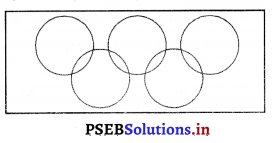
ਪ੍ਰਸ਼ਨ 5.
ਨਵੀਨ ਓਲੰਪਿਕ ਖੇਡਾਂ ਦੇ ਕੀ ਨਿਯਮ ਹਨ ? [ਅਭਿਆਸ ਦਾ ਪ੍ਰਸ਼ਨ]- 5] (What are the main Rules of Modern Olympic ?)
ਉੱਤਰ-
ਨਵੀਨ ਓਲੰਪਿਕ ਖੇਡਾਂ ਦੇ ਨਿਯਮ (Rules of new Olympics ) – ਪਹਿਲਾਂ ਤਾਂ ਖੇਡਾਂ ਦੇ ਨਿਯਮ ਬਹੁਤ ਹੀ ਸਾਧਾਰਨ ਸਨ ਕੋਈ ਵੀ ਵਿਅਕਤੀ ਇਹਨਾਂ ਵਿਚ ਭਾਗ ਲੈ | ਸਕਦਾ ਸੀ ।1908 ਈ: ਵਿਚ ਓਲੰਪਿਕ ਖੇਡਾਂ ਲੰਡਨ ਵਿਚ ਆਯੋਜਿਤ ਕੀਤੀਆਂ ਗਈਆਂ ਅਤੇ ਨਿਯਮਾਂ ਦਾ ਨਿਰਮਾਣ ਕੀਤਾ ਗਿਆ । ਇਹ ਨਿਯਮ ਇਸ ਪ੍ਰਕਾਰ ਹਨ-
(1) ਹਰੇਕ ਦੇਸ਼ ਜੋ ਉਲੰਪਿਕ ਖੇਡਾਂ ਦਾ ਮੈਂਬਰ ਹੈ ਆਪਣੇ ਕਿਸੇ ਵੀ ਦੇਸ਼ ਵਾਸੀ ਨੂੰ ਖੇਡਾਂ ਵਿਚ ਭਾਗ ਲੈਣ ਲਈ ਭੇਜ ਸਕਦਾ ਹੈ ।
(2) ਕੋਈ ਵੀ ਵਿਵਸਾਇਕ ਖਿਡਾਰੀ (Professional Player) ਇਸ ਵਿਚ ਭਾਗ ਨਹੀਂ ਲੈ ਸਕਦਾ । ਇਸ ਗੱਲ ਦੀ ਪੁਸ਼ਟੀ ਉਸ ਦੀ ਰਾਸ਼ਟਰੀ ਕਮੇਟੀ ਕਰਦੀ ਹੈ । ਇਸ ਵਿਸ਼ੇ ਵਿਚ ਖਿਡਾਰੀ ਨੂੰ ਵੀ ਲਿਖ ਕੇ ਦੇਣਾ ਪੈਂਦਾ ਹੈ ।
(3) ਇਸ ਵਿਚ ਭਾਗ ਲੈਣ ਵਾਲੇ ਖਿਡਾਰੀ ’ਤੇ ਉਮਰ, ਜਾਤੀ, ਧਰਮ ਆਦਿ ਦਾ ਪ੍ਰਤੀਬਿੰਧ ਨਹੀਂ ਹੈ ।
(4) ਕੋਈ ਵੀ ਖਿਡਾਰੀ ਨਸ਼ੇ ਦੀ ਹਾਲਤ ਵਿਚ ਖੇਡਾਂ ਵਿਚ ਭਾਗ ਨਹੀਂ ਲੈ ਸਕਦਾ ।
(5) ਖਿਡਾਰੀ ਦੇ ਲਿੰਗ ਦੀ ਜਾਂਚ ਕੀਤੀ ਜਾਂਦੀ ਹੈ ।
(6) ਕਿਸੇ ਇਕ ਦੇਸ਼ ਵਲੋਂ ਭਾਗ ਲੈਣ ਵਾਲਾ ਖਿਡਾਰੀ ਕਿਸੇ ਦੂਸਰੇ ਰਾਸ਼ਟਰ ਵਲੋਂ ਭਾਗ ਨਹੀਂ ਲੈ ਸਕਦਾ ।
(7) ਜੇ ਕੋਈ ਨਵਾਂ ਦੇਸ਼ ਹੋਂਦ ਵਿਚ ਆਇਆ ਹੋਵੇ ਤਾਂ ਉਹ ਆਪਣਾ ਖਿਡਾਰੀ ਭੇਜ ਸਕਦਾ ਹੈ । ਇਹਨਾਂ ਖੇਡਾਂ ਦਾ ਪ੍ਰਬੰਧ ਅੰਤਰ-ਰਾਸ਼ਟਰੀ ਓਲੰਪਿਕ ਕਮੇਟੀ ਦੁਆਰਾ ਕੀਤਾ ਜਾਂਦਾ ਹੈ । ਇਸ ਕਮੇਟੀ ਵਿਚ ਹਰੇਕ ਦੇਸ਼ ਦਾ ਇਕ ਮੈਂਬਰ ਹੁੰਦਾ ਹੈ, ਪਰ ਜਿਸ ਦੇਸ਼ ਵਿਚ ਓਲੰਪਿਕ ਕਮੇਟੀਆਂ ਸਥਾਪਿਤ ਹੋਣ ਜਾਂ ਜਿੱਥੇ ਖੇਡਾਂ ਦਾ ਪ੍ਰਬੰਧ ਚੰਗੀ ਤਰ੍ਹਾਂ ਹੋਵੇ, ਉਸ ਦੇ ਦੋ ਮੈਂਬਰ ਹੋ ਸਕਦੇ ਹਨ । ਇਸ ਕਮੇਟੀ ਦੇ ਅੱਠ ਮੈਂਬਰ ਸਾਲ ਲਈ ਆਪਣੇ ਪ੍ਰਧਾਨ ਦੀ ਚੋਣ ਕਰਦੇ ਹਨ । ਇਸ ਤੋਂ ਇਲਾਵਾ ਚਾਰ ਸਾਲ ਲਈ ਦੋ ਉਪ-ਪ੍ਰਧਾਨਾਂ ਦੀ ਚੋਣ ਕਰਦੇ ਹਨ । ਪੰਜ ਹੋਰ ਮੈਂਬਰ ਵੀ ਇਸ ਕਮੇਟੀ ਦੇ ਮੈਂਬਰ ਚੁਣਦੇ ਹਨ । ਇਹ ਕਮੇਟੀ ਨਿਯਮ ਅਨੁਸਾਰ ਓਲੰਪਿਕ ਖੇਡਾਂ ਦਾ ਪ੍ਰਬੰਧ ਰਕਦੀ ਹੈ ।
ਪ੍ਰਸ਼ਨ 6.
ਅੰਤਰ-ਰਾਸ਼ਟਰੀ ਓਲੰਪਿਕ ਕਮੇਟੀ ਬਾਰੇ ਲਿਖੋ । (Write about International Olympic Committee.)
ਉੱਤਰ-
ਅੰਤਰ-ਰਾਸ਼ਟਰੀ ਓਲੰਪਿਕ ਕਮੇਟੀ (International Olympic Committee) – ਓਲੰਪਿਕ ਖੇਡਾਂ ਦੇ ਪ੍ਰਬੰਧ ਲਈ ਇਕ ਕਮੇਟੀ ਬਣਾਈ ਗਈ ਜਿਸ ਦਾ ਨਾਂ ਅੰਤਰ-ਰਾਸ਼ਟਰੀ ਓਲੰਪਿਕ ਕਮੇਟੀ (International Olympic Committee) ਰੱਖਿਆ ਗਿਆ । ਇਸ ਵਿਚ ਹਰੇਕ ਦੇਸ਼ ਦਾ ਇਕ-ਇਕ ਪ੍ਰਤੀਨਿਧ ਲਿਆ ਗਿਆ । ਇਸ ਕਮੇਟੀ ਦਾ ਮੁੱਖ ਦਫਤਰ Compague Mon Zeps Lausanne (Switzerland) ਵਿਚ ਹੈ । ਇਸ ਕਮੇਟੀ ਦਾ ਇਕ ਪ੍ਰਧਾਨ ਚੁਣਿਆ ਜਾਂਦਾ ਹੈ, ਦੋ ਮੀਤ ਪ੍ਰਧਾਨ ਅਤੇ ਕਾਰਜਪਾਲਿਕਾ (Executive) ਦੇ ਮੈਂਬਰ ਚੁਣੇ ਜਾਂਦੇ ਹਨ । ਇਸ ਤਰ੍ਹਾਂ ਇਹ ਕਮੇਟੀ ਹਰ ਚਾਰ ਸਾਲ ਮਗਰੋਂ ਹੋਣ ਵਾਲੇ ਓਲੰਪਿਕ ਖੇਡਾਂ ਦੇ ਸਥਾਨ ਅਤੇ ਸਮੇਂ ਆਦਿ ਦਾ ਫ਼ੈਸਲਾ ਕਰਦੀ ਹੈ । ਫੈਸਲੇ ਤੋਂ ਮਗਰੋਂ ਉਸ ਦੇਸ਼ ਦੀ ਰਾਸ਼ਟਰੀ ਓਲੰਪਿਕ ਕਮੇਟੀ ਵੱਖ-ਵੱਖ ਖੇਡਾਂ ਦੀ ਤਿਆਰੀ ਸ਼ੁਰੂ ਕਰ ਦਿੰਦੀ ਹੈ ।
ਅੰਤਰ-ਰਾਸ਼ਟਰੀ ਓਲੰਪਿਕ ਕਮੇਟੀ ਇਹ ਖੇਡਾਂ ਲਗਾਤਾਰ ਕਰਵਾਉਣ ਲਈ ਹਮੇਸ਼ਾ ਤਿਆਰ ਰਹਿੰਦੀ ਹੈ । ਇਸ ਕਮੇਟੀ ਦੀ ਲਗਾਤਾਰ ਕੋਸ਼ਿਸ਼ ਹੁੰਦੀ ਹੈ ਕਿ ਕਿਉਬਰਟਿਨ ਦੇ ਫ਼ੈਸਲੇ ਅਨੁਸਾਰ ਸਾਰੇ ਸੰਸਾਰ ਵਿਚ ਪਿਆਰ ਅਤੇ ਸ਼ਾਂਤੀ ਦਾ ਸੰਦੇਸ਼ ਪਹੁੰਚਾਵੇ । ਖੇਡਾਂ ਵਿਚ ਖੇਡ ਦੀ ਭਾਵਨਾ ਨਾਲ ਹੀ ਮੁਕਾਬਲੇ ਕਰਵਾਏ ਜਾਣ ਅਤੇ ਉਨ੍ਹਾਂ ਵਿਚ ਕਿੱਤੇ ਆਦਿ ਦਾ ਕੋਈ ਸਥਾਨ ਨਾ ਹੋਵੇ ।
ਖੇਡਾਂ ਸੰਸਾਰ ਵਿਚ ਸ਼ਾਂਤੀ ਅਤੇ ਮਿੱਤਰਤਾ ਨੂੰ ਵਧਾਉਣ ਵਿਚ ਸਹਾਇਕ ਹੁੰਦੀਆਂ ਹਨ । ਓਲੰਪਿਕ ਕਮੇਟੀ ਵਿਚ ਹਰ ਇਕ ਦੇਸ਼ ਦਾ ਇਕ ਨੁਮਾਇੰਦਾ ਹੁੰਦਾ ਹੈ, ਪਰ ਜਿਸ ਦੇਸ਼ ਵਿਚ ਓਲੰਪਿਕ ਖੇਡਾਂ ਹੋਈਆਂ ਹੋਣ ਜਾਂ ਓਲੰਪਿਕ ਲਹਿਰ ਨੂੰ ਅੱਗੇ ਚਲਾਉਣ ਵਿਚ ਸਹਾਇਤਾ ਕੀਤੀ ਹੋਵੇ, ਉਸ ਦੇਸ਼ ਦੇ ਦੋ ਮੈਂਬਰ ਹੁੰਦੇ ਹਨ । ਇਹ ਕਮੇਟੀ ਆਪਣਾ ਪ੍ਰਧਾਨ ਆਪ ਚੁਣਦੀ ਹੈ ਜੋ ਪੰਜ ਸਾਲ ਤਕ ਰਹਿੰਦਾ ਹੈ । ਦੁਬਾਰਾ ਚੁਣੇ ਜਾਣ ‘ਤੇ ਚਾਰ ਸਾਲ ਤੱਕ ਫਿਰ ਪ੍ਰਧਾਨ ਰਹਿ ਸਕਦਾ ਹੈ । ਇਸ ਵਿਚ ਦੋ ਉਪ ਪ੍ਰਧਾਨ ਹੁੰਦੇ ਹਨ, ਜੋ ਕੇਵਲ ਚਾਰ ਸਾਲ ਤਕ ਕੰਮ ਕਰਦੇ ਹਨ । ਇਹ ਉਪ ਪ੍ਰਧਾਨ ਦੁਬਾਰਾ ਚੋਣ ਲੜ ਸਕਦੇ ਹਨ । ਉਪ ਪ੍ਰਧਾਨ ਅਤੇ ਪੰਜ ਐਗਜ਼ੈਕਟਿਵ ਦੇ ਮੈਂਬਰ ਚਾਰ ਸਾਲ ਮਗਰੋਂ ਓਲੰਪਿਕ ਖੇਡਾਂ ਨੂੰ ਕਰਵਾਉਣ ਵਿਚ ਸਹਾਇਤਾ ਕਰਦੇ ਹਨ । ਮੁੱਖ ਕਾਰਜਪਾਲਿਕਾ ਦਾ ਮੁੱਖ ਸੈਕਰੇਟਰੀ ਹੁੰਦਾ ਹੈ ਜੋ ਬੋਰਡ ਦੁਆਰਾ ਚੁਣਿਆ ਜਾਂਦਾ ਹੈ ਅਤੇ ਆਪਣੇ ਪ੍ਰਧਾਨ ਦੇ ਹੁਕਮ ਅਨੁਸਾਰ ਕੰਮ ਕਰਦਾ ਹੈ ।
![]()
ਪ੍ਰਸ਼ਨ 7.
ਭਾਰਤੀ ਖਿਡਾਰੀਆਂ ਨੇ ਓਲੰਪਿਕ ਖੇਡਾਂ ਵਿਚ ਕੀ ਸਥਾਨ ਪ੍ਰਾਪਤ ਕੀਤਾ ਹੈ ? (Discuss the main achievements of Indian Players in Olympic ?)
ਉੱਤਰ-
ਓਲੰਪਿਕ ਖੇਡਾਂ ਵਿਚ ਭਾਰਤੀ ਖਿਡਾਰੀਆਂ ਦੀਆਂ ਸਫ਼ਲਤਾਵਾਂ (Achievements of Indian Players in Olmypic) – ਨਵੀਨ ਓਲੰਪਿਕ ਖੇਡਾਂ ਦਾ ਆਰੰਭ 1896 ਈ: ਵਿਚ ਹੋਇਆ । ਇਸ ਕੰਮ ਵਿਚ ਫ਼ਰਾਂਸ ਦੇ ਬੈਰਨ ਦਿ ਕਿਉਬਰਟਿਨ ਨੇ ਪਸ਼ੰਸਾ ਯੋਗ ਭੂਮਿਕਾ ਨਿਭਾਈ ਸੀ । ਇਸੇ ਕਾਰਨ ਉਸ ਨੂੰ ਓਲੰਪਿਕ ਖੇਡਾਂ ਦਾ ਜਨਮਦਾਤਾ ਕਿਹਾ ਜਾਂਦਾ ਹੈ । (P.S.E.B. 2007 C) ਭਾਰਤ ਨੇ ਇਹਨਾਂ ਖੇਡਾਂ ਵਿਚ 1900 ਈ: ਵਿਚ ਪਹਿਲੀ ਵਾਰ ਭਾਗ ਲਿਆ । ਭਾਰਤੀ ਖਿਡਾਰੀ ਨਾਰਮਨ ਨੇ 200 ਮੀਟਰ ਦੀ ਦੌੜ ਵਿਚ ਦੂਸਰਾ ਸਥਾਨ ਪ੍ਰਾਪਤ ਕਰ ਕੇ ਚਾਂਦੀ ਦਾ ਤਮਗਾ ਪ੍ਰਾਪਤ ਕੀਤਾ 1920 ਈ: ਦੀਆਂ ਓਲੰਪਿਕ ਖੇਡਾਂ ਵਿਚ ਭਾਰਤ ਵਲੋਂ ਛੇ , ਖਿਡਾਰੀਆਂ ਨੇ ਐਥਲੈਟਿਕਸ ਅਤੇ ਕੁਸ਼ਤੀਆਂ ਵਿਚ ਭਾਗ ਲਿਆ । 1924 ਈ: ਵਿਚ ਪੈਰਿਸ ਵਿਚ ਓਲੰਪਿਕ ਖੇਡਾਂ ਦਾ ਪ੍ਰਬੰਧ ਹੋਇਆ । ਇਹਨਾਂ ਵਿਚ ਅੱਠ ਭਾਰਤੀ ਖਿਡਾਰੀਆਂ ਨੇ ਭਾਗ ਲਿਆ ਸੀ । ਸ੍ਰੀ ਜੀ. ਡੀ. ਸੋਂਧੀ, ਐਚ. ਸੀ. ਬੈਂਕ ਅਤੇ ਏ.ਜੀ. ਲਾਰੇਨ ਨੇ ਓਲੰਪਿਕ ਲਹਿਰ ਨੂੰ ਦੇਸ਼ ਵਿਚ ਲੋਕ-ਪਿਯ ਕਰਨ ਦੇ ਲਈ ਮਹੱਤਵਪੂਰਨ ਯੋਗਦਾਨ ਦਿੱਤਾ । (P.S.E.B. 2004 B) 1927 ਈ: ਵਿਚ ਇੰਡੀਅਨ ਓਲੰਪਿਕ ਐਸੋਸੀਏਸ਼ਨ ਦੀ ਸਥਾਪਨਾ ਹੋਈ ।
1928 ਈ: ਵਿਚ ਭਾਰਤੀ ਹਾਕੀ ਟੀਮ ਨੇ ਪਹਿਲੀ ਵਾਰ ਐਮਸਟਰਡਮ (P.S.E.B. 2005 C) ਵਿਚ ਪ੍ਰਬੰਧਿਤ ਓਲੰਪਿਕ ਖੇਡਾਂ ਵਿਚ ਭਾਗ ਲਿਆ । ਇਸ ਨੇ ਸੋਨੇ ਦਾ ਤਮਗਾ ਜਿੱਤਿਆ । 1928 ਈ: ਤੋਂ 1956 ਈ: ਤਕ ਭਾਰਤ ਹਾਕੀ ਜਗਤ ਵਿਚ ਛਾਇਆ ਰਿਹਾ । 1952 ਈ: ਵਿਚ ਕੇ. ਡੀ. ਯਾਦਵ ਨੇ ਕੁਸ਼ਤੀ ਦੇ ਮੁਕਾਬਲੇ ਵਿਚ ਭਾਗ ਲਿਆ ਅਤੇ ਤਾਂਬੇ ਦਾ ਤਮਗਾ ਜਿੱਤਿਆ । 1956 ਈ: ਵਿਚ ਮੈਲਬੋਰਨ ਵਿਚ ਪ੍ਰਬੰਧਿਤ ਓਲੰਪਿਕ ਖੇਡਾਂ ਵਿਚ ਭਾਰਤ ਦੀ ਫੁੱਟਬਾਲ ਟੀਮ ਨੇ ਪਹਿਲੀ ਵਾਰ ਭਾਗ ਲਿਆ । ਇਸ ਟੀਮ ਨੇ ਚੌਥਾ ਸਥਾਨ ਪ੍ਰਾਪਤ ਕੀਤਾ 1960 ਈ: ਵਿਚ ਰੋਮ ਵਿਚ ਹੋਈਆਂ ਓਲੰਪਿਕ ਖੇਡਾਂ ਵਿਚ ਭਾਰਤੀ ਹਾਕੀ ਟੀਮ ਨੇ ਦੂਸਰਾ ਸਥਾਨ ਪ੍ਰਾਪਤ ਕੀਤਾ । ਇਸੇ ਸਾਲ ਮਿਲਖਾ ਸਿੰਘ ਨੇ 400 ਮੀਟਰ ਦੌੜ ਵਿਚ ਚੌਥਾ ਸਥਾਨ ਪ੍ਰਾਪਤ ਕੀਤਾ ।
1954 ਈ: ਵਿਚ ਟੋਕਿਓ ਵਿਚ ਓਲੰਪਿਕ ਖੇਡਾਂ ਦਾ ਪ੍ਰਬੰਧ ਹੋਇਆ। ਇਸ ਵਿਚ ਭਾਰਤੀ ਹਾਕੀ ਟੀਮ ਫੇਰ ਤੋਂ ਪਹਿਲਾਂ ਸਥਾਨ ਪ੍ਰਾਪਤ ਕਰਨ ਵਿਚ ਸਫਲ ਹੋਈ । 1968, 1972 ਅਤੇ 1976 ਵਿਚ ਪ੍ਰਬੰਧਿਤ ਹੋਣ ਵਾਲੀਆਂ ਓਲੰਪਿਕ ਖੇਡਾਂ ਵਿਚ ਭਾਰਤੀ ਹਾਕੀ ਟੀਮ ਪਹਿਲਾ ਸਥਾਨ | ਪਾ ਕੇ ਸੋਨੇ ਦਾ ਤਮਗਾ ਜਿੱਤਣ ਵਿਚ ਅਸਫਲ ਰਹੀ ।1976 ਵਿਚ ਓਲੰਪਿਕ ਖੇਡਾਂ ਮਾਂਟਰੀਆਲ ਵਿਚ ਹੋਈਆਂ । ਇਸ ਵਿਚ ਸ਼ਿਵਨਾਥ ਨੇ ਮੈਰਾਥਨ ਦੌੜ ਵਿਚ ਗਿਆਰਵਾਂ ਅਤੇ ਸ੍ਰੀ ਰਾਮ ਨੇ 800 ਮੀਟਰ ਦੌੜ ਵਿਚ ਸੱਤਵਾਂ ਸਥਾਨ ਪ੍ਰਾਪਤ ਕੀਤਾ । 1980 ਵਿਚ ਮਾਸਕੋ ਵਿਚ ਹੋਈਆਂ ਓਲੰਪਿਕ ਖੇਡਾਂ ਵਿਚ ਭਾਰਤੀ ਹਾਕੀ ਟੀਮ ਨੇ ਸੋਨੇ ਦਾ ਤਮਗਾ ਜਿੱਤਣ ਵਿਚ ਸਫਲਤਾ ਪ੍ਰਾਪਤ ਕੀਤੀ । ਇਹਨਾਂ ਖੇਡਾਂ ਵਿਚ ਭਾਰਤੀ ਟੀਮ ਨੇ ਐਥਲੈਟਿਕਸ, ਕੁਸ਼ਤੀਆਂ, ਬਾਕਸਿੰਗ, ਬਾਸਕਟ ਬਾਲ, ਨਿਸ਼ਾਨੇਬਾਜ਼ੀ ਅਤੇ ਵਾਲੀਬਾਲ ਵਿਚ ਤਾਂ ਭਾਗ ਲਿਆ ਸੀ, ਪਰ ਇਹਨਾਂ ਵਿਚ ਉਸ ਨੂੰ ਕੋਈ ਵਿਸ਼ੇਸ਼ ਸਫਲਤਾ ਹੱਥ ਨਹੀਂ ਲੱਗੀ । ਪਰ 1984 ਵਿਚ ਲਾਂਸ ਏਂਜਲਸ ਵਿਚ ਹੋਈਆਂ ਓਲੰਪਿਕ ਖੇਡਾਂ ਵਿਚ ਭਾਰਤੀ ਖਿਡਾਰੀਆਂ ਦਾ ਪ੍ਰਦਰਸ਼ਨ ਬਹੁਤ ਨਿਰਾਸ਼ਾਜਨਕ ਰਿਹਾ ।
ਉੱਪਰ ਦੱਸੇ ਖਿਡਾਰੀਆਂ ਦੇ ਇਲਾਵਾ ਕਈ ਹੋਰ ਭਾਰਤੀ ਖਿਡਾਰੀਆਂ ਨੇ ਓਲੰਪਿਕ ਖੇਡਾਂ ਵਿਚ ਵੀ ਆਪਣੀ ਉੱਤਮ ਖੇਡ ਦਾ ਪ੍ਰਦਰਸ਼ਨ ਕਰ ਕੇ ਅੰਤਰ-ਰਾਸ਼ਟਰੀ ਖੇਤਰ ਵਿਚ ਬਹੁਤ ਨਾਂ ਕਮਾਇਆ |
1996 ਦੀਆਂ ਉਲੰਪਿਕ ਖੇਡਾਂ ਜੋ ਕਿ ਐਟਲਾਂਟਾ ਵਿੱਚ ਹੋਈਆਂ। ਲਾਨ ਟੈਨਿਸ ਦੇ ਖਿਡਾਰੀ ਲਿਏਂਡਰ ਪੇਅਸ ਨੇ ਤਾਂਬੇ ਦਾ ਤਮਗਾ ਜਿਤਿਆ ਸੀ। ਇਸ ਤੋਂ ਬਾਅਦ ਸੰਨ 2000 ਵਿਚ ਕਰਨਮ ਮਲੇਸ਼ਵਰੀ ਨੇ ਵੇਟਲਿਫਟਿੰਗ ਦੇ 69 ਕਿਲੋ ਵਜ਼ਨ ਵਰਗ ਵਿਚ ਕਾਂਸੀ ਦਾ ਤਮਗਾ ਹਾਸਿਲ ਕੀਤਾ। ਇਸ ਵਿਚ ਮੁੱਕੇਬਾਜ਼ ਗੁਰਚਰਨ ਸਿੰਘ, ਦੌੜਾਕ ਲੜਕੀ ਕੇ. ਐਸ. ਸ਼ੀਲਾ ਕੌਲ ਅਤੇ ਨਿਸ਼ਾਨੇਬਾਜ਼ ਅੰਜਲੀ ਵੇਦ ਪਾਠਕ ਨੇ ਨਾਮਣਾ ਖੱਟਿਆ। 2004 ਦੀਆਂ ਉਲੰਪਿਕ ਖੇਡਾਂ ਵਿਚ ਭਾਰਤ ਦੇ ਸ੍ਰੀ ਰਾਜਵਰਧਨ ਸਿੰਘ ਰਾਠੌਰ ਨੇ ਸ਼ੂਟਿੰਗ ਵਿਚ ਚਾਂਦੀ ਦਾ ਤਮਗਾ ਜਿੱਤਿਆ ਅਤੇ ਐਥਲੀਟ ਅੰਜੂ ਬੌਬੀ ਜਾਰਜ ਨੇ ਲੰਬੀ ਛਾਲ ਵਿਚ 6ਵਾਂ ਸਥਾਨ ਹਾਸਿਲ ਕੀਤਾ।
2008 ਦੀਆਂ ਉਲੰਪਿਕ ਖੇਡਾਂ ਵਿਚ ਭਾਰਤੀਆਂ ਦਾ ਪ੍ਰਦਰਸ਼ਨ
ਨਾਂ – ਤਮਗਾ – ਖੇਡ
- ਅਭਿਨਵ ਬਿੰਦਰਾ – ਸੋਨੇ ਦਾ – ਸ਼ੂਟਿੰਗ
- ਸੁਸ਼ੀਲ ਕੁਮਾਰ – ਤਾਂਬੇ ਦਾ – ਕੁਸ਼ਤੀ
- ਵਿਜੇਂਦਰ ਕੁਮਾਰ – ਤਾਂਬੇ ਦਾ – ਬਾਕਸਿੰਗ
2012 ਦੀਆਂ ਉਲੰਪਿਕ ਖੇਡਾਂ
ਨਾਂ – ਤਮਗਾ – ਖੇਡ
- ਸੁਸ਼ੀਲ ਕੁਮਾਰ – ਚਾਂਦੀ ਦਾ – ਕੁਸ਼ਤੀ
- ਵਿਜੈ ਕੁਮਾਰ – ਚਾਂਦੀ ਦਾ – ਸ਼ੂਟਿੰਗ
- ਮੈਰੀ ਕੋਮ – ਤਾਂਬੇ ਦਾ – ਬਾਕਸਿੰਗ
- ਸਾਹਿਨਾ ਨੇਹਵਾਲ – ਤਾਂਬੇ ਦਾ – ਬੈਡਮਿੰਟਨ
- ਗਗਨ ਨਾਰੰਗ – ਤਾਂਬੇ ਦਾ – ਸ਼ੂਟਿੰਗ
- ਯੋਗੇਸ਼ਵਰ ਦੱਤ – ਤਾਂਬੇ ਦਾ – ਕੁਸ਼ਤੀ
2016 ਦੀਆਂ ਉਲੰਪਿਕ ਖੇਡਾਂ |
ਨਾਂ – ਤਮਗਾ – ਖੇਡ
- ਪੀ.ਵੀ. ਸਿੰਧੂ – ਚਾਂਦੀ ਦਾ – ਬੈਡਮਿੰਟਨ
- ਸਾਕਸ਼ੀ ਮਲਿਕ – ਤਾਂਬੇ ਦਾ – ਕੁਸ਼ਤੀ
ਪ੍ਰਸ਼ਨ 8.
ਏਸ਼ਿਆਈ ਖੇਡਾਂ ਕਦੋਂ ਅਤੇ ਕਿਉਂ ਸ਼ੁਰੂ ਹੋਈਆਂ ? ਇਹ ਖੇਡਾਂ ਸ਼ੁਰੂ ਕਰਨ ਵਿਚ ਭਾਰਤ ਦਾ ਕੀ ਯੋਗਦਾਨ ਹੈ ? [ਅਭਿਆਸ ਦਾ ਪ੍ਰਸ਼ਨ] (When and where Asian Games were Started ? Write the contribution of India to start Asian Games.)
ਉੱਤਰ-
ਏਸ਼ਿਆਈ ਖੇਡਾਂ (Asian Gemes) – 14ਵੀਂ ਓਲੰਪਿਕ ਖੇਡਾਂ ਦਾ 1948 ਈ: ਵਿਚ ਲੰਡਨ ਵਿਚ ਪ੍ਰਬੰਧ ਕੀਤਾ ਗਿਆ । ਉਸ ਸਮੇਂ ਸ੍ਰੀ ਜੀ. ਡੀ. ਸੋਂਧੀ ਨੇ ਇਹ ਵਿਚਾਰ ਕੀਤਾ ਕਿ ਜਦੋਂ ਭਾਰਤੀ ਜਾਂ ਏਸ਼ਿਆਈ ਖਿਡਾਰੀ ਯੂਰਪੀ ਦੇਸ਼ਾਂ ਵਿਚ ਪ੍ਰਬੰਧਿਤ ਖੇਡਾਂ ਦੇ ਮੁਕਾਬਲਿਆਂ ਵਿਚ ਭਾਗ ਲੈਣ ਜਾਂਦੇ ਹਨ ਤਾਂ ਉਹ ਖੇਡ ਦਾ ਚੰਗਾ ਪ੍ਰਦਰਸ਼ਨ ਨਹੀਂ ਕਰ ਪਾਉਂਦੇ । ਇਸ ਲਈ ਜੇ ਏਸ਼ਿਆਈ ਦੇਸ਼ਾਂ ਦੇ ਖਿਡਾਰੀ ਆਪਸ ਵਿਚ ਮੁਕਾਬਲਾ ਕਰ ਲੈਣ ਤਾਂ ਇਕ ਤਾਂ ਉਹਨਾਂ ਵਿਚ ਮੁਕਾਬਲਾ ਕਰਨ ਦੀ ਸ਼ਕਤੀ ਵਧੇਗੀ ਅਤੇ ਦੂਸਰੇ ਖੇਡ ਦਾ ਪੱਧਰ ਉੱਨਤ ਹੋਵੇਗਾ । ਇਸ | ਵਿਚਾਰ ਨੂੰ ਕਾਰਜ ਰੂਪ ਦੇਣ ਲਈ ਉਹਨਾਂ ਨੇ 8 ਅਗਸਤ, 1948 ਈ: ਨੂੰ ਲੰਡਨ ਦੇ ਮਾਊਂਟ ਰਾਇਲ ਹੋਟਲ ਵਿਖੇ ਏਸ਼ਿਆਈ ਦੇਸ਼ਾਂ ਦੀ ਇਕ ਸਭਾ ਬੁਲਾਈ । ਇਸ ਸਭਾ ਵਿਚ ਕੋਰੀਆ, ਬਰਮਾ (ਮਿਆਂਮਾਰ), ਚੀਨ, ਸ੍ਰੀ ਲੰਕਾ ਆਦਿ ਦੇਸ਼ਾਂ ਦੇ ਪ੍ਰਤੀਨਿਧੀਆਂ ਨੇ ਭਾਗ ਲਿਆ । ਇਸ ਸਭਾ ਦੇ ਸਭ ਮੈਂਬਰਾਂ ਨੇ ਏਸ਼ਿਆਈ ਖੇਡਾਂ ਦੇ ਮੁਕਾਬਲੇ ਕਰਵਾਉਣ ਦੇ ਸੁਝਾਅ ਦਾ ਸਮਰਥਨ ਕੀਤਾ ।
ਮਹਾਰਾਜਾ ਪਟਿਆਲਾ ਸ੍ਰੀ ਯਾਦਵਿੰਦਰ ਸਿੰਘ ਨੇ ਏਸ਼ਿਆਈ ਖੇਡਾਂ ਦੇ ਆਰੰਭ ਕਰਨ ਵਿਚ | ਵਿਸ਼ੇਸ਼ ਮਹੱਤਵਪੂਰਨ ਭੂਮਿਕਾ ਨਿਭਾਈ । ਉਹਨਾਂ ਨੇ ਫਰਵਰੀ, 1949 ਵਿਚ ਦਿੱਲੀ ਵਿਚ ਏਸ਼ਿਆਈ ਖੇਡਾਂ ਲਈ ਏਸ਼ਿਆਈ ਦੇਸ਼ਾਂ ਦੀ ਸਭਾ ਬੁਲਾਈ । ਇਸ ਸਭਾ ਵਿਚ ਭਾਰਤ, ਅਫ਼ਗਾਨਿਸਤਾਨ, ਸ੍ਰੀ ਲੰਕਾ, ਬਰਮਾ (ਮਿਆਂਮਾਰ), ਪਾਕਿਸਤਾਨ, ਇੰਡੋਨੇਸ਼ੀਆ, ਨੇਪਾਲ, ਫਿਲਿਪਾਈਨ ਅਤੇ ਥਾਈਲੈਂਡ ਆਦਿ ਦੇਸ਼ਾਂ ਦੇ ਪ੍ਰਤੀਨਿਧੀਆਂ ਨੇ ਭਾਗ ਲਿਆ । ਇਸ ਸਭਾ ਵਿਚ | ਏਸ਼ੀਆ ਐਥਲੈਟਿਕਸ ਫੈਡਰੇਸ਼ਨ ਨੂੰ ਏਸ਼ੀਅਨ ਖੇਡ ਫੈਡਰੇਸ਼ਨ ਦਾ ਨਾਂ ਦਿੱਤਾ ਗਿਆ ਸੀ । ਇਸ ਦੇ ਸੰਵਿਧਾਨ ਦਾ ਨਿਰਮਾਣ ਕੀਤਾ ਗਿਆ । ਏਸ਼ਿਆਈ ਖੇਡਾਂ ਨੂੰ ਹਰ ਚਾਰ ਸਾਲ ਬਾਅਦ ਆਯੋਜਿਤ ਕਰਨ ਦਾ ਨਿਸ਼ਚਾ ਕੀਤਾ ਗਿਆ । ਪਹਿਲੀਆਂ ਏਸ਼ਿਆਈ ਖੇਡਾਂ 4 ਮਾਰਚ ਤੋਂ 11 ਮਾਰਚ, 1951 ਤਕ ਦਿੱਲੀ ਦੇ ਨੈਸ਼ਨਲ ਸਟੇਡੀਅਮ ਵਿਚ ਹੋਣੀਆਂ ਨਿਸ਼ਚਿਤ ਹੋਈਆਂ ਸਨ । 1982 ਅਤੇ 1986 ਵਿਚ ਇਹ ਦਿੱਲੀ ਅਤੇ ਸਿਓਲ ਵਿਚ ਹੋਈਆਂ ।
![]()
ਪ੍ਰਸ਼ਨ 9.
ਕਿਨ੍ਹਾਂ-ਕਿਨ੍ਹਾਂ ਭਾਰਤੀ ਖਿਡਾਰੀਆਂ ਨੇ ਅੰਤਰ-ਰਾਸ਼ਟਰੀ ਪੱਧਰ ਤੇ ਨਾਮਣੇ ਪ੍ਰਾਪਤ ਕੀਤੇ ਹਨ ?
(Write about the outstanding players of India who won Laurels in International Competition ?)
ਉੱਤਰ-
ਭਾਰਤ ਵਿਚ ਅਜਿਹੇ ਖਿਡਾਰੀ ਹੋਏ ਹਨ ਜਿਨ੍ਹਾਂ ਨੇ ਅੰਤਰ-ਰਾਸ਼ਟਰੀ ਖੇਡਾਂ ਵਿਚ ਆਪਣੇ ਸਰਵ-ਉੱਤਮ ਪ੍ਰਦਰਸ਼ਨ ਦੁਆਰਾ ਭਾਰਤ ਦੇ ਨਾਂ ਨੂੰ ਰੌਸ਼ਨ ਕੀਤਾ । ਅੰਤਰ-ਰਾਸ਼ਟਰੀ ਪੱਧਰ ‘ਤੇ ਨਾਂ ਕਮਾਉਣ ਵਾਲੇ ਭਾਰਤੀ ਖਿਡਾਰੀਆਂ ਦਾ ਵਰਣਨ ਹੇਠ ਦਿੱਤਾ ਗਿਆ ਹੈ-
(1) ਲੈਰੀ ਮਿੰਟੋ ਨੇ 1951 ਵਿਚ ਹੋਈਆਂ ਪਹਿਲੀਆਂ ਏਸ਼ਿਆਈ ਖੇਡਾਂ ਵਿਚ 100 ਮੀਟਰ ਦੌੜ ਵਿਚ ਪਹਿਲੀ ਥਾਂ ਪ੍ਰਾਪਤ ਕਰਕੇ ਸੋਨੇ ਦਾ ਤਮਗਾ ਜਿੱਤਿਆ ।
(2) 1954 ਵਿਚ ਮਨੀਲਾ ਵਿਚ ਪਬੰਧਿਤ ਏਸ਼ਿਆਈ ਖੇਡਾਂ ਵਿਚ ਸੋਹਨ ਸਿੰਘ ਨੇ 800 ਮੀਟਰ ਦੌੜ, ਅਜੀਤ ਸਿੰਘ ਨੇ ਉੱਚੀ ਛਾਲ, ਪਦੱਮਣ ਸਿੰਘ ਨੇ ਡਿਸਕਸ ਥਰੋ ਅਤੇ ਗੋਲਾ | ਸੁੱਟਣ ਵਿਚ ਸੋਨੇ ਦੇ ਤਮਗੇ ਜਿੱਤੇ । ਇਹਨਾਂ ਦੇ ਇਲਾਵਾ ਜੋਗਿੰਦਰ ਸਿੰਘ ਨੇ ਚਾਂਦੀ ਅਤੇ ਐੱਮ. ਗੋਬਿਆਨ ਨੇ 100 ਮੀਟਰ ਦੌੜ ਅਤੇ ਕਾਲੂ ਰਾਮ ਨੇ 3000 ਅਤੇ 5000 ਮੀਟਰ ਦੌੜ ਵਿਚ ਤੀਸਰਾ ਸਥਾਨ ਪ੍ਰਾਪਤ ਕਰਕੇ ਕਾਂਸੇ ਦੇ ਤਮਗੇ ਜਿੱਤੇ ।
(3) 1958 ਵਿਚ ਹੋਈਆਂ ਪ੍ਰਬੰਧਿਤ ਏਸ਼ਿਆਈ ਖੇਡਾਂ ਵਿਚ ਫਲਾਇੰਗ ਸਿੱਖ (Flying Sikh) ਮਿਲਖਾ ਸਿੰਘ ਨੇ 200 ਮੀਟਰ ਅਤੇ 400 ਮੀਟਰ ਦੌੜ ਵਿਚ, ਮਹਿੰਦਰ ਸਿੰਘ ਨੇ ਹਾਪ ਸਟੈਪ ਐਂਡ ਜੰਪ ਵਿਚ, ਬਲਕਾਰ ਸਿੰਘ ਨੇ ਜੈਵਲਿਨ ਸੁੱਟਣ ਵਿਚ, ਦੁੱਮਣ ਸਿੰਘ ਨੇ ਗੋਲਾ ਸੁੱਟਣ ਵਿਚ, ਐੱਚ. ਚਾਂਦ ਨੇ 100 ਮੀਟਰ ਹਰਡਲਜ਼ ਵਿਚ ਅਤੇ ਜਗਜੀਤ ਸਿੰਘ ਨੇ 400 | ਮੀਟਰ ਹਰਡਲਜ਼ ਵਿਚ ਸੋਨੇ ਦਾ ਤਮਗਾ ਪ੍ਰਾਪਤ ਕੀਤਾ । ਇਹਨਾਂ ਤੋਂ ਇਲਾਵਾ ਸਵੀਟਾ ਡਿਸੂਜਾ ਨੇ 200 ਮੀਟਰ ਦੌੜ ਜਿੱਤ ਕੇ ਨਵਾਂ ਰਿਕਾਰਡ ਕਾਇਮ ਕੀਤਾ । ਐਲਿਜਾਬੇਥ ਡੈਵਨ ਪੋਰਟ ਨੇ 46.07 ਮੀਟਰ ਦੂਰ ਜੈਵਲਿਨ ਸੁੱਟ ਕੇ ਦੂਸਰਾ ਸਥਾਨ ਪ੍ਰਾਪਤ ਕੀਤਾ ।
(4) 1966 ਵਿਚ ਹੋਈਆਂ ਏਸ਼ਿਆਈ ਖੇਡਾਂ ਵਿਚ ਅਜਮੇਰ ਸਿੰਘ ਨੇ 400 ਮੀਟਰ ਅਤੇ ਬੀ.ਐਸ. ਬਰੂਆ ਨੇ 800 ਮੀਟਰ ਦੌੜ ਵਿਚ ਸੋਨੇ ਦਾ ਤਮਗਾ ਪ੍ਰਾਪਤ ਕੀਤਾ । ਪ੍ਰਵੀਨ ਨੇ ਡਿਸਕਸ ਥਰੋ, ਜੋਗਿੰਦਰ ਸਿੰਘ ਨੇ ਗੋਲਾ ਸੁੱਟਣ ਅਤੇ ਭੀਮ ਸਿੰਘ ਨੇ ਉੱਚੀ ਛਾਲ ਵਿਚ ਸੋਨੇ ਦੇ ਤਮਗੇ ਜਿੱਤੇ ।
(5) 1970 ਵਿਚ ਬੈਂਕਾਕ ਵਿਚ ਪ੍ਰਬੰਧਿਤ ਏਸ਼ਿਆਈ ਖੇਡਾਂ ਵਿਚ ਕੰਵਲਜੀਤ ਸੰਧੂ ਨੇ 400 | ਮੀਟਰ ਦੌੜ ਵਿਚ, ਮਹਿੰਦਰ ਸਿੰਘ ਨੇ ਹਾਪ ਸਟੈਪ ਐਂਡ ਜੰਪ ਵਿਚ ਅਤੇ ਜੋਗਿੰਦਰ ਸਿੰਘ ਨੇ ਗੋਲਾ ਸੁੱਟਣ ਵਿਚ ਸੋਨੇ ਦੇ ਤਮਗੇ ਪ੍ਰਾਪਤ ਕੀਤੇ । ਇਹਨਾਂ ਤੋਂ ਇਲਾਵਾ ਐਡਵਰਡ ਸ਼ਕੇਰਾ ਨੇ 500 ਮੀਟਰ ਵਿਚ, ਸ੍ਰੀ ਰਾਮ ਨੇ 800 ਮੀਟਰ ਵਿਚ, ਲਾਭ ਸਿੰਘ ਨੇ ਲੰਮੀ ਛਾਲ, ਹਾਪ ਸਟੈਪ ਅਤੇ ਜੰਮ ਵਿਚ ਚਾਂਦੀ ਦੇ ਤਮਗੇ ਪ੍ਰਾਪਤ ਕੀਤੇ । ਮਨਜੀਤ ਵਾਲੀਆ ਨੇ 800 ਮੀਟਰ ਹਰਡਲਜ਼, ਸੁੱਚਾ ਸਿੰਘ ਨੇ 400 ਮੀਟਰ ਵਿਚ ਅਤੇ ਗੁਰਮੇਜ਼ ਸਿੰਘ ਨੇ 3000 ਮੀਟਰ ਵਿਚ ਤਾਂਬੇ ਦਾ ਤਮਗਾ ਪ੍ਰਾਪਤ ਕੀਤਾ ।
(6) 1974 ਵਿਚ ਤਹਿਰਾਨ ਵਿਚ ਹੋਈਆਂ ਏਸ਼ਿਆਈ ਖੇਡਾਂ ਵਿਚ ਸ਼ਿਵਨਾਥ ਨੇ 500 ਮੀਟਰ ਵਿਚ ਨਵਾਂ ਰਿਕਾਰਡ ਸਥਾਪਿਤ ਕੀਤਾ । ਕੰਵਲਜੀਤ ਸੰਧੂ ਨੇ 56.5 ਸੈਕਿੰਡ ਵਿਚ 400 ਮੀਟਰ ਦੀ ਦੌੜ ਜਿੱਤ ਕੇ ਭਾਰਤੀ ਇਸਤਰੀ ਵਜੋਂ ਸੋਨੇ ਦਾ ਤਮਗਾ ਜਿੱਤਿਆ । ਇਹਨਾਂ ਹੀ ਖੇਡਾਂ ਵਿਚ ਟੀ. ਸੀ. ਯੋਗਨਨ ਨੇ ਲੰਮੀ ਛਾਲ ਵਿਚ ਅਤੇ ਵੀ. ਐਸ. ਚੌਹਾਨ ਨੇ 1500 ਮੀਟਰ ਦੌੜ ਵਿਚ ਸੋਨੇ ਦਾ ਤਮਗਾ ਪ੍ਰਾਪਤ ਕੀਤਾ । ਨਿਰਮਲ ਸਿੰਘ ਨੇ ਹੈਮਰ ਸੁੱਟਣ ਵਿਚ ਚਾਂਦੀ ਦਾ ਅਤੇ ਲੈਹਿੰਬਰ ਸਿੰਘ ਨੇ 400 ਮੀਟਰ ਹਰਡਲ ਵਿਚ ਤਾਂਬੇ ਦਾ ਤਮਗਾ ਪ੍ਰਾਪਤ ਕੀਤਾ ।
(7) 1978 ਦੀਆਂ ਏਸ਼ਿਆਈ ਖੇਡਾਂ ਵਿਚ ਹਰੀ ਚੰਦ ਨੇ 100 ਮੀਟਰ ਦੌੜ ਵਿਚ ਸੋਨੇ ਦਾ ਤਮਗਾ ਪ੍ਰਾਪਤ ਕੀਤਾ । ਗੀਤਾ ਜੁਤਸ਼ੀ ਨੇ 1500 ਮੀਟਰ ਵਿਚ ਚਾਂਦੀ ਅਤੇ 800 ਮੀਟਰ ਦੌੜ ਵਿਚ ਸੋਨੇ ਦੇ ਤਮਗੇ ਪ੍ਰਾਪਤ ਕੀਤੇ ।
1982 ਦੀਆਂ ਨੌਵੀਆਂ ਏਸ਼ਿਆਈ ਖੇਡਾਂ ਜੋ ਦਿੱਲੀ ਵਿਖੇ ਹੋਈਆਂ ਸਨ । ਬਹਾਦਰ ਸਿੰਘ ਨੇ ਗੋਲਾ ਸੁੱਟਣ ਵਿਚ ਨਵਾਂ ਰਿਕਾਰਡ ਕਾਇਮ ਕੀਤਾ, ਗੀਤਾ ਜੁਤਸ਼ੀ ਨੇ 800, 1500 ਮੀਟਰ ਦੌੜ ਵਿਚ ਦੁਸਰਾ ਸਥਾਨ, ਵਾਲਸੰਮਾ ਨੇ 400 ਮੀਟਰ ਹਰਡਲ ਦੌੜ ਵਿਚ ਪਹਿਲਾ ਸਥਾਨ, 800 ਮੀਟਰ ਵਿਚ ਬਰੋਮੀਓ ਨੇ ਪਹਿਲਾ ਸਥਾਨ ਅਤੇ ਚਾਂਦ ਰਾਮ ਨੇ 200 ਕਿਲੋਮੀਟਰ ਵਾਕ ਵਿਚ ਪਹਿਲਾ ਸਥਾਨ ਪ੍ਰਾਪਤ ਕੀਤਾ । ਹਾਕੀ ਵਿਚ ਲੜਕੀਆਂ ਨੇ ਸੋਨੇ ਦਾ ਤਮਗਾ ਅਤੇ ਮੁੰਡਿਆਂ ਨੇ ਚਾਂਦੀ ਦਾ ਤਮਗਾ ਜਿੱਤਿਆ । ਕੁਸ਼ਤੀਆਂ ਵਿਚ ਸਤਪਾਲ ਸਿੰਘ ਨੇ ਸੋਨੇ ਦਾ ਤਮਗਾ ਅਤੇ ਕਰਤਾਰ ਸਿੰਘ ਨੇ ਚਾਂਦੀ ਦਾ ਤਮਗਾ ਜਿੱਤਿਆ ।
ਕੌਰ ਸਿੰਘ ਨੇ ਬਾਕਸਿੰਗ ਵਿਚ ਸੋਨੇ ਦਾ ਤਮਗਾ ਜਿੱਤਿਆ | ਭਾਰਤ ਦੀ ਘੋੜਿਆਂ ਦੀ ਟੀਮ ਨੇ ਸੋਨੇ ਦੇ ਤਮਗੇ ਜਿੱਤੇ ਅਤੇ ਭਾਰਤ ਦੀ ਗੋਲਫ ਦੀ ਟੀਮ ਨੇ ਸੋਨੇ ਦੇ ਤਮਗੇ ਜਿੱਤੇ ।
ਪ੍ਰਸ਼ਨ 10.
ਨਵੀਨ ਓਲੰਪਿਕ ਖੇਡਾਂ ਵਿਚ ਕਿਹੜੀਆਂ-ਕਿਹੜੀਆਂ ਖੇਡ ਘਟਨਾਵਾਂ ਹੁੰਦੀਆਂ ਹਨ ? (ਅਭਿਆਸ ਦਾ ਪ੍ਰਸ਼ਨ – 6) (Name the main sports events which are organised in Modern Olympic ?)
ਉੱਤਰ-
ਨਵੀਨ ਓਲੰਪਿਕ ਖੇਡਾਂ ਵਿਚ ਹੇਠ ਲਿਖੀਆਂ ਖੇਡ ਘਟਨਾਵਾਂ ਹੁੰਦੀਆਂ ਹਨ-
- ਤੀਰ ਅੰਦਾਜ਼ੀ (Archery)
- ਐਥਲੈਟਿਕਸ (Athletics)
- ਬਾਸਕਟਬਾਲ (Basket ball)
- ਬਾਕਸਿੰਗ (Boxing)
- ਕੈਨੋਇੰਗ (Canoeing)
- ਸਾਈਕਲਿੰਗ (Cycling)
- ਈਕਵੀਸਟਰੇਟ (Equestrin)
- ਫੁੱਟਬਾਲ (Foot Ball)
- ਜਿਮਨਾਸਟਿਕ (Gymnastics)
- ਹੈਂਡ ਬਾਲ (Hand Ball)
- ਹਾਕੀ (Hockey)
- ਜੂਡੋ (Judo)
- ਨਿਸ਼ਾਨੇ ਬਾਜ਼ੀ (Shooting)
- ਰੋਇੰਗ (Rowing)
- ਤੈਰਾਕੀ ਤੇ (Swimming and ਡੁਬਕੀ ਲਾਉਣਾ Diving)
- ਤਲਵਾਰ ਬਾਜ਼ੀ (Fencing)
- ਵਾਲੀਬਾਲ (Volley Ball)
- ਵਾਟਰ ਪੋਲੋ (Water Polo)
- ਭਾਰ ਉਠਾਉਣਾ (Weight Lifting)
- ਕੁਸ਼ਤੀ (Wrestling)
- ਯਾਟ-ਕਿਸ਼ਤੀ ਦੌੜ (Yachting)
![]()
ਪ੍ਰਸ਼ਨ 11.
11ਵੀਂ ਏਸ਼ਿਆਈ ਖੇਡਾਂ ਵਿਚ ਭਾਰਤੀਆਂ ਨੇ ਕਿਹੜੇ-ਕਿਹੜੇ ਇਨਾਮ ਪ੍ਰਾਪਤ ਕੀਤੇ ਹਨ ? [ਅਭਿਆਸ ਦਾ ਪ੍ਰਸ਼ਨ – 9] (Mention the achievements of Indian sportsman in eleventh Asian Games.)
ਉੱਤਰ-
ਗਿਆਰਵੀਆਂ ਏਸ਼ਿਆਈ ਖੇਡਾਂ ਬੀਜਿੰਗ (ਚੀਨ) ਵਿਚ ਸੰਨ 1990 ਵਿਚ 22-9-1990 ਤੋਂ 7-10-1990 ਤਕ ਹੋਈਆਂ ਸਨ । ਇਸ ਵਿਚ ਭਾਰਤੀਆਂ ਨੇ ਹੇਠ ਲਿਖੇ ਮੁਕਾਬਲਿਆਂ ਵਿਚ ਇਨਾਮ ਪ੍ਰਾਪਤ ਕੀਤੇ ਸਨਖੇਡ ਸੋਨਾ-
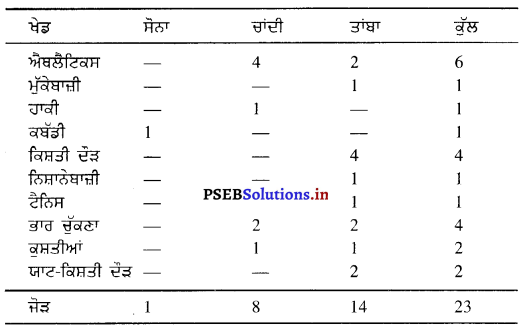
ਪ੍ਰਸ਼ਨ 12.
ਸਾਲ 1982 ਦੀਆਂ ਏਸ਼ਿਆਈ ਖੇਡਾਂ ਕਿਸ ਦੇਸ਼ ਵਿਚ ਹੋਈਆਂ ਸਨ ? (In which country were the 1982 Asian games were held ?)
ਉੱਤਰ-
ਭਾਰਤ ਵਿਚ ।
ਏਸ਼ਿਆਈ ਖੇਡਾਂ
ਨੰਬਰ – ਸੰਨ – ਸਥਾਨ
1. – 1951 – ਦਿੱਲੀ (ਭਾਰਤ)
2. – 1954 – ਮਨੀਲਾ (ਫਿਲਪੀਨ)
3. – 1958 – ਟੋਕੀਓ (ਜਾਪਾਨ)
4. – 1962 – ਜਕਾਰਤਾ (ਇੰਡੋਨੇਸ਼ੀਆ) (ਥਾਈ ਦੇਸ਼ਾਂ ਦੇ ਮਿਲਵਰਤਨ ਨਾ ਮਿਲਣ ਕਾਰਨ ਇਹਨਾਂ ਨੂੰ ਏਸ਼ਿਆਈ ਖੇਡਾਂ ਦੀ ਮਾਨਤਾ ਨਾ ਮਿਲ ਸਕੀ।)
5. – 1966 – ਬੈਂਕਾਕ (ਥਾਈਲੈਂਡ)
6. – 1970 – ਬੈਂਕਾਕ (ਥਾਈਲੈਂਡ)
7. – 1974 – ਤਹਿਰਾਨ (ਈਰਾਨ)
8. – 1978 – ਬੈਂਕਾਕ (ਥਾਈਲੈਂਡ)
9. – 1982 – ਦਿੱਲੀ (ਭਾਰਤ)
10. – 1986 – ਮਿਓਲ (ਦੱਖਣੀ ਕੋਰੀਆ)
11. – 1990 – ਬੀਜਿੰਗ (ਚੀਨ)
12. – 1994 – ਹੀਰੋਸ਼ੀਮਾ (ਜਾਪਾਨ)
13. – 1998 – ਬੈਂਕਾਕ (ਥਾਈਲੈਂਡ)
14. – 2002 – ਪੁਸਾਜ (ਸਾਊਥ ਕੋਰੀਆ)
15. – 2006 – ਦੋਹਾ (ਕਤਰ)
16. – 2010 – ਗੋਗਘੋ (ਚੀਨ)
17. – 2014 – ਇੰਮੀਐਨ (ਸਾਊਥ ਕੋਰੀਆ)
18. – 2018 – ਜਕਾਰਤਾ (ਇੰਡੋਨੇਸ਼ੀਆ)
19. – 2022 – ਹੈਮਪਾਡ ਚੀਨ ਵਿਚ ਹੋਣਗੀਆਂ

